Hilo is the largest city located on the windward side of the Big Island of Hawaii. This side of the island receives the most moisture, resulting in a landscape rich with tropical plants and jungles.
Not only is this area one of the prettiest on the island, but it is also steeped in history. Hilo was first settled by the Polynesians back in 1100 AD and became an important fishing and agricultural community.
Today, visitors can still experience a taste of old Hawaii and soak up the unparalleled beauty. Keep reading to discover the best things to do in Hilo!
*Disclaimer: This post contains affiliate links. If you make a purchase or book a reservation through the link provided then we receive a small commission at no extra cost to you. We really appreciate your support!
8 of the Best Things to do in Hilo
Table of Contents
- 1. Explore the shops at the Hilo Bayfront
- 2. Enjoy some local cuisine
- 3. Snorkel at Carlsmith Beach Park
- 4. Visit the free Pana’ewa Rainforest Zoo & Gardens
- 5. See the waterfalls at Wailuku River State Park
- 6. Cliff jump at Coconut Island
- 7. Explore a lava tube at Kaumana Caves State Park
- 8. Visit ‘Akaka Falls
1. Explore the shops at the Hilo Bayfront
Hilo is the oldest city on the Big Island. It is full of character and is where you’ll experience the old Hawaiian feel.
It is believed that the Hilo Bayfront was once the royal center where the chiefs had their summer homes.
It was also once referred to as “Japantown” and was home to Hilo’s Japanese district.
Over the years, Hilo Bay continued to serve as an important port for trade and commerce and Hilo grew to become the second most populated region in all of the Hawaiian islands.
Much of the city was destroyed or damaged during two catastrophic tsunamis that hit in 1946 and 1960.
The 1946 tsunami was particularly devastating. It was the result of a horrific earthquake off Alaska that took place on April Fool’s Day.
It was considered the worst natural disaster in Hawaii’s history, claiming the lives of 159 people, including 21 schoolchildren.
The 1960 tsunami took the lives of another 38 people.
Look for the clock on Kamehameha Street in front of the Naniloa Golf Course. You’ll notice that the hands are frozen at 1:04 am when it was hit by the 1960 tsunami.
Although many lives were lost, the city was rebuilt as a testament to their resilience.
Today, the Hilo Bayfront is a vibrant area lined with a collection of shops and restaurants.
You’ll find vintage stores, art galleries, boutiques, souvenir shops, and so much more.
Be sure to stop at the Locavore Store for produce, handmade gifts, and the best Hawaiian macadamia nut butter toffee!
The Pacific Tsunami Museum is also worth a stop. It serves as a tsunami education center as well as a living memorial to those that lost their lives during the devastating tsunamis.
The museum is housed in the old First Hawaiian Bank building. Visitors are even shown a video of the tsunami while sitting in the old bank vault.
The tours are run by volunteers, many of which actually lived through the tsunami.
Afterward, wander over to the Hilo Farmers Market on the corner of Punahoa and Mamo Street. Here you’ll find the best farmers market on the island.
The market is open 7 days a week from 7 am to 3 pm, but Wednesdays and Saturdays are the big market days.
Here you’ll find over 200 local farmers and vendors selling produce and handmade goods.
2. Enjoy some local cuisine
Hilo has a wide variety of restaurants, cafes, and bakeries to choose from. Here are some of the best places to eat in Hilo:
Pineapples Island Fresh Cuisine
Pineapples Island Fresh Cuisine is our favorite place to eat in Hilo.
This popular open-air restaurant is known for its delicious local cuisine, great service, and fun atmosphere.
Order the Nui Nachos, Lava Burger, Teriyaki Flank Steak, or the Fresh Catch of the day.
They also serve a fun Pineapple Pow drink, a combination of pineapple, orange, and watermelon juice. It is served inside a cored pineapple and topped with fresh cream and fruit.
Enjoy your meal in the breezy dining room while listening to live music playing. Just be sure to make a reservation in advance, the tables fill up quickly!
Wilson’s By The Bay
Wilson’s By The Bay is arguably the best place to go for shave ice in Hilo.
My favorite combination is banana, coconut, and pineapple.
Ask to get it snowcapped where they drizzle sweetened condensed milk on top. You can also get it topped with lilikoi powder.
Two Ladies Kitchen
This local bakery is a must. Here you can pick up some homemade mochi, a sweet Japanese rice cake.
They are only open Wednesday through Saturday and there is usually a line out the door.
Try the strawberry, brownie, or butter mochi filled with a homemade butter cake. Honestly, you can’t go wrong with any flavor!
Makanis Magic Pineapple Shack
Makanis Magic Pineapple Shack is a trendy spot to grab a refreshing treat.
Their signature menu item is the Aloha Bowl. It is a locally sourced açaí bowl topped with homemade granola, fresh fruit, coconut shavings, and organic honey then served inside of a pineapple bowl.
Their house-made Unicorn soft-serve ice cream cones are also a fun option.
Pho Viet
Pho Viet is a bit of a hole-in-the-wall joint, but they are known for serving the best steaming bowls of pho on the island.
If you’re not familiar with pho, it is a Vietnamese noodle soup. The base is made of broth with meat and noodles, then you can add your own garnishes and seasonings to customize your soup.
The restaurant is small with only a few tables and they do not take reservations, so plan to arrive early and expect a wait.
Hawaiian Style Cafe
If you’re looking for traditional Hawaiian plates, Hawaiian Style Cafe is a local’s favorite.
They are also known for their loco moco. Loco moco consists of white rice, topped with a hamburger patty, brown gravy, and a fried egg.
I will say that this wasn’t our personal favorite place to eat, but it came highly recommended by others.
I’ve heard Cafe 100 is actually a better place to go for loco moco with 30 different varieties.
Suisan Fish Market
This small shop located on the Hilo Bayfront serves the best fresh fish around.
Order poke by the pound with a side of rice from the walk-up counter, then enjoy your meal overlooking the water.
Since the fish is caught fresh daily, the menu changes depending on what is available.
Moon & Turtle
This is the best place to go in Hilo to experience accessible fine dining.
The elevated menu features Asian-infused seafood dishes, such as Filet Mignon Ceviche, Tuna Belly, Portuguese Sausage Campanelle, and Mushroom Risotto made with sushi rice.
Moon & Turtle is a small intimate restaurant that is very popular, so be sure to make a reservation in advance.
3. Snorkel at Carlsmith Beach Park
You’ll notice that there are not very many sandy beaches in Hilo. The rugged coastline on this side of the island is made up of mostly lava rock.
Carlsmith Beach Park, also known as “Four Mile”, is no exception. Here you’ll find a lava rock reef that creates a natural barrier and the most picturesque lagoons.
The calm water and soft sandy bottom make for the perfect natural swimming pool. The city has even constructed handrails to make access easy.
Carlsmith Beach is also one of the best snorkeling beaches in Hilo and one of the best places to swim with sea turtles.
You’ll often spot Green Hawaiian Sea Turtles gliding along in the water, as well as a variety of reef fish
Pockets of cold freshwater seep underground into the lagoon, making it the perfect spot to cool off on a hot day.
And if you’re looking for some of the most beautiful black sand beaches on the island, be sure to check out Punalu’u Beach near South Point and Pololū Beach at Pololū Valley.
Carlsmith Beach Park is one of the best places to spend an afternoon with the family.
In addition to the lava rock-fringed lagoons, you’ll also find a grassy area with shade trees, picnic pavilions, barbecue grills, and restrooms.
If you’re looking for a place to stay in Hilo, we booked a condo at Mauna Loa Shores only steps away from Carlsmith Beach.
The building itself is a little older and dated, but the unit we rented was recently renovated and tastefully decorated. They even had snorkel gear to borrow.
We loved staying here, the only downside is that there is no air conditioning. However, that is common in most Hawaiian homes.
The complex does have a swimming pool which is an added bonus.
Keep in mind that there isn’t a lot of new development in Hilo. You won’t find any ritzy resorts like on the Kona side, so Airbnb’s will be your best bet.
4. Visit the free Pana’ewa Rainforest Zoo & Gardens
Hawaii’s Big Island is one of the most ecologically diverse places on earth. Here you will find 4 out of the 5 major climate zones and 8 out of the 13 sub-zones.
There are not many places where you can experience the polar tundra climate at the summit of Mauna Kea and Mauna Loa then drive less than an hour to reach the humid tropical climate in Hilo.
It is here in this humid tropical climate that you’ll find the Pana’ewa Rainforest Zoo, the only tropical zoo in the US.
Pana’ewa Rainforest Zoo is located about 15-20 minutes from Hilo and is a bit of a hidden gem.
The zoo is open daily from 10 am to 4 pm and admission is always free, although donations are appreciated.
The zoo is home to almost 200 animals and is spread across 12 acres in the Pana’ewa Forest.
You’ll find everything from monkeys, to alligators, and even a Bengal tiger.
Pana’ewa Zoo is also one of the most beautiful zoos you’ll ever visit. Over the years, local societies have come together to transform the area into a well-curated botanical garden.
You’ll find shaded animal enclosures and manicured walking paths lined with blooming plants.
The Hawaii Tropical Bioreserve & Gardens are also located nearby and boast one of the best botanical gardens on the island.
Here you’ll find several walking trails throughout the gardens. The most popular is the Onomea Bay Trail that weaves through the dense jungle and leads to a gorgeous beach cove.
Tickets to the Hawaii Tropical Gardens is $25 for adults and $12 for kids 6-16 years.
If you only have time to visit one garden, I would recommend coming to the Pana’ewa Zoo where the gardens are free and you get to see wild animals.
5. See the waterfalls at Wailuku River State Park
The Wailuku River is the longest river in Hawaii and flows for 28 miles inland before emptying into Hilo Bay. It was formed by two different lava flows from Mauna Kea over 10,000 years ago.
There are several waterfalls that can be found along the river that make up the Wailuku River State Park. This state park is free to visit. It is also easily accessible and is located less than 10 minutes from the Hilo Bayfront.
Rainbow Falls
Rainbow Falls is the most well-known waterfall at Wailuku River State Park.
There is a parking lot at the viewpoint where you can see an 80-foot waterfall plunging over a lava cave and into the pool below.
Swimming is not permitted at Rainbow Falls, but it’s worth a quick stop to check it out.
On a sunny day, the mist from the waterfall creates a beautiful rainbow over the falls, which is where the name comes from.
Boiling Pots
If you drive a little further upstream, you’ll come to a lookout point for the Boiling Pots.
Contrary to what the name implies, the Boiling Pots aren’t geothermal pools. Instead, during a storm the water angrily swirls in these pools resembling bubbling cauldrons.
While it may look tempting to take a dip in these pools on a calm day, don’t be deceived. This area is prone to flash flooding and many people have lost their lives here.
Pe’epe’e Falls
If you look further upstream from the observation deck, you can spot Pe’epe’e Falls in the distance.
There is a worn path to the left of the observation deck that leads to a closer view of the falls. Keep in mind, this path is not maintained and you are crossing at your own risk.
As mentioned before, this area of the river is particularly prone to flash flooding and has taken several lives. Do not attempt to get closer to the waterfall if the river is high or there are storms in the forecast.
However, on a clear day when the river is low, some visitors opt to take the path to get a closer view of the waterfall.
But you won’t be able to reach the actual falls unless you’re willing to get wet. When the water is low, you can cross the waist-deep water to reach the other side of the bank.
From there, you’ll need to scramble up some rocks and make your way through the trees until you reach the pool at the base of the waterfall.
This protected cove is a little slice of tropical paradise.
You’ll be surrounded by waterfalls and volcanic cliffs carpeted in vegetation.
You can swim across the deep pool to the waterfall where you can actually climb on the rocks and go behind the falls. They are slippery so be careful.
There are also different spots where you can cliff jump or just swim in the pool.
Once again, use extreme caution and know your limits if you plan to do this. You are visiting at your own risk.
Wai’ale Falls
If you are looking to swim in a waterfall that isn’t quite as risky, then head to Wai’ale Falls. This waterfall is located a short drive upriver from the Boiling Pots.
The road crosses over a bridge where you can spot the waterfall. There is a small parking area just past the bridge.
Look for a short trail that leads down to the river. From here, you’ll need to cross through the river to reach a large rocky island where you can hang out and swim at the base of the falls.
The Wai’ale Falls are one of the few waterfalls on the Big Island that you can swim in. It is a popular swimming hole among locals, however, it is still a bit of a hidden gem for tourists.
Always use caution and common sense when visiting. Don’t enter the water if the water level is high and there are storms in the forecast.
If you want to get closer to the falls without getting wet, you can actually take a trail up to the top of the falls.
The 0.6-mile out-and-back trail is located on the right side of the bridge. Just look for a path leading through the trees.
The trail is a bit primitive, you’ll be climbing over rocks and tree roots as you scramble your way up.
Although the trail isn’t always clearly marked, it just follows alongside the cliff for about a quarter mile until you reach the waterfall.
The waterfall and pool will be on your left and there is a river on your right so you can’t really get too lost, just keep heading straight up.
I would recommend using AllTrails Pro, though. It will alert you if you’ve gone off the path even if you don’t have cell service.
Once you reach the top, you’ll have a unique perspective of the falls.
There are even little pools above the waterfall that you can swim in or catch tadpoles.
Wailuku River State Park is one of our top recommended stops while spending a week on the Big Island. For a complete itinerary, see our guide for the Best Things to do on the Big Island in One Week.
6. Cliff jump at Coconut Island
Coconut Island is a small island located just off the shore in Hilo Bay.
It is easy to access with a pedestrian bridge crossing from the parking lot to the island.
Here you’ll find a large grassy picnic area, an ocean pool, small sandy coves, and tide pools.
There is also a manmade jumping platform located on the northern side of the island that’s popular with the kids.
Locals gather here on the weekends for barbecues and to spend time with family and friends. If you visit during the week it will be less crowded.
Coconut Island is located adjacent to the beautifully landscaped Queen Lili’uokalani Gardens and Banyan Drive.
This street is like the “Hilo Walk of Fame”. It is lined with banyan trees that have been planted by famous people such as Amelia Earhart, Franklin D. Roosevelt, Babe Ruth, King George V, and Richard Nixon.
*Related post: If you’re planning to visit Kailua-Kona, check out these 8 Fun Things to do in Kona!
7. Explore a lava tube at Kaumana Caves State Park
Kaumana Caves State Park is home to one of the longest lava tubes in the world.
The cave was formed from a lava flow after the 1881 eruption of Mauna Loa and runs for about 20 miles underground.
A portion of the cave can be accessed from a collapsed section of the tube, also known as a skylight.
It is free to visit the lave tube and there is a parking lot located at the top of the entrance. Here you will find a metal staircase leading down to the cave.
You can explore the cave in either direction, just be sure to bring a flashlight or headlamp. The cave floor is also wet and slippery so wear sturdy shoes with good traction.
*Related post: If you are planning to visit Hawaii Volcanoes National Park, check our guide to hiking the Kilauea Iki Trail.
8. Visit ‘Akaka Falls
‘Akaka Falls is one of the most impressive waterfalls on the Big Island. The 442-foot waterfall is nestled in the heart of the jungle in ‘Akaka Falls State Park.
While the waterfall itself is absolutely stunning, I will say that the experience does feel like a bit of a tourist trap.
Visitors will need to pay $10 for parking and then an additional $5 per person, which can add up when you’re traveling as a family. You can save money by parking outside of the park and walking in, though.
Once you enter, you’ll follow the paved 0.4-mile ‘Akaka Falls Loop Trail.
It’s a beautiful walk that leads through the rainforest filled with banyan trees, bamboo shoots, leafy ferns, and blooming hibiscus.
You’ll even pass a viewpoint for another waterfall, the Kahūnā Falls.
These falls are just shy of 400 feet and are almost as tall as ‘Akaka Falls. However, you can only catch a glimpse of the waterfall from a distance.
The trail can get congested with so many visitors. Once you reach ‘Akaka Falls, you’ll most likely be waiting in line while everyone takes a photo in front of the waterfall before being shuffled along.
Visiting ‘Akaka Falls is one of the most popular things to do in Hilo, so I would recommend arriving early in the morning before the shuttle busses and cruise ship passengers arrive.
If you want a more authentic waterfall experience, try booking a night at the Kulaniapia Inn.
Guests at the inn will have access to a private waterfall and swimming hole. Kayaks and paddleboards are also available for use.
Day passes can be purchased for $50 per person, but it is free for guests that are spending the night.
For another unique waterfall experience, book a zipline tour over the dramatic Kolekole Falls near Hilo.
[convertkit form=3250084]
I hope this guide has helped you discover the best things to do in Hilo, Hawaii!
Other posts you might like:
Pin it for later:
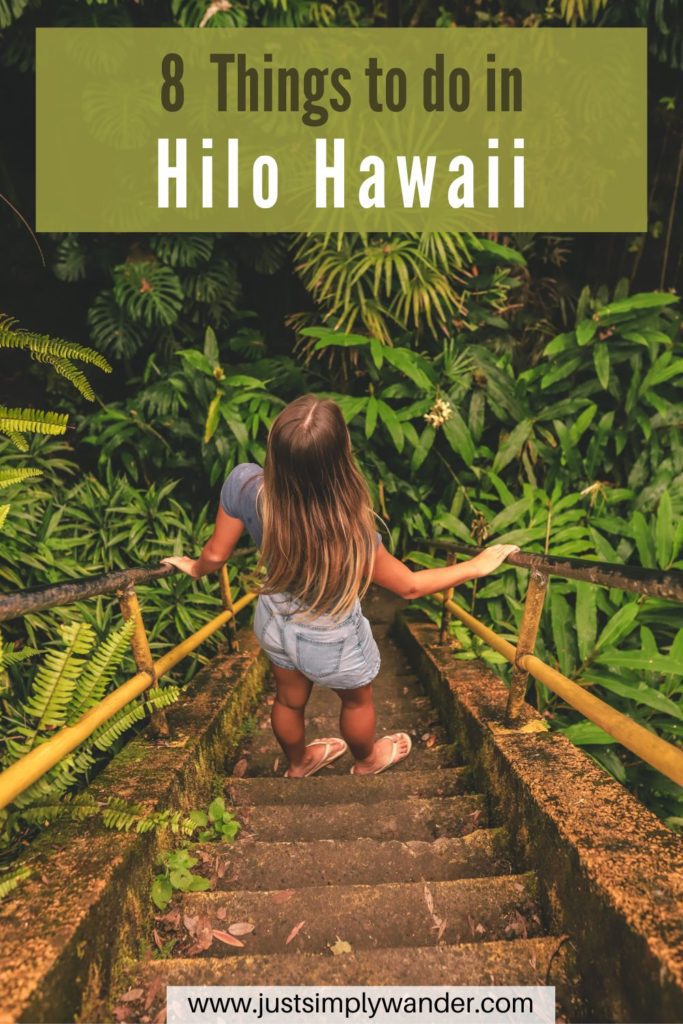

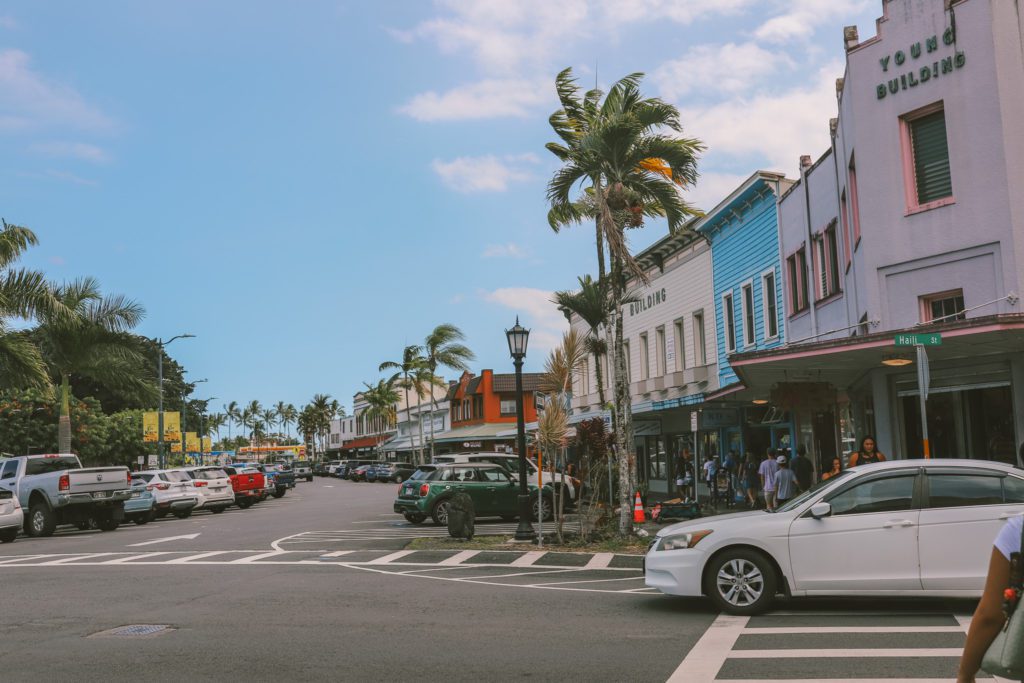
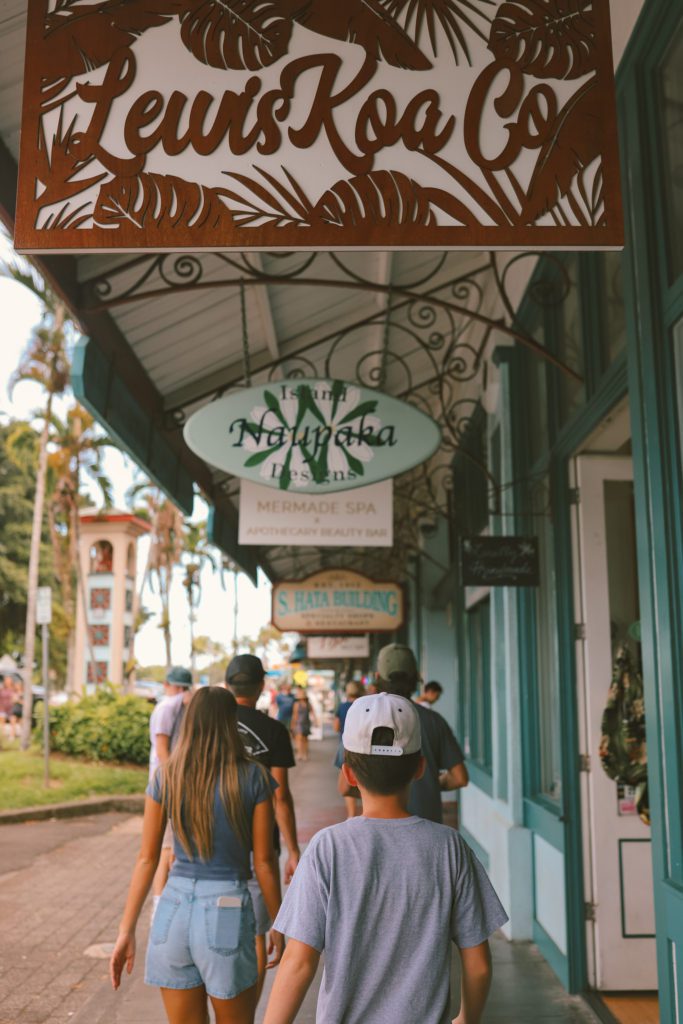
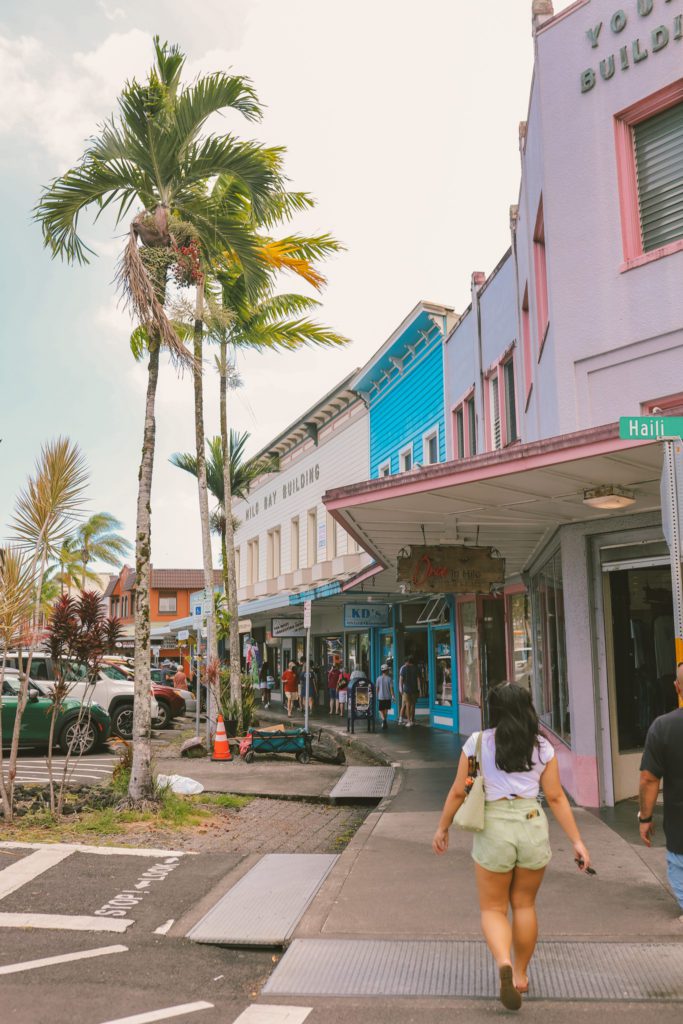
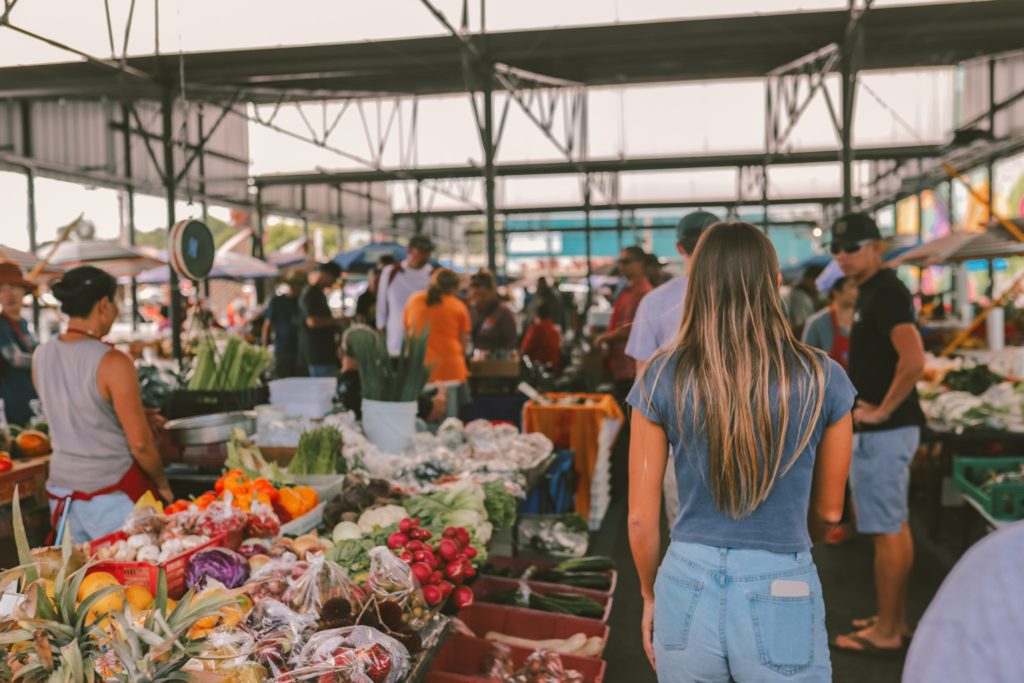
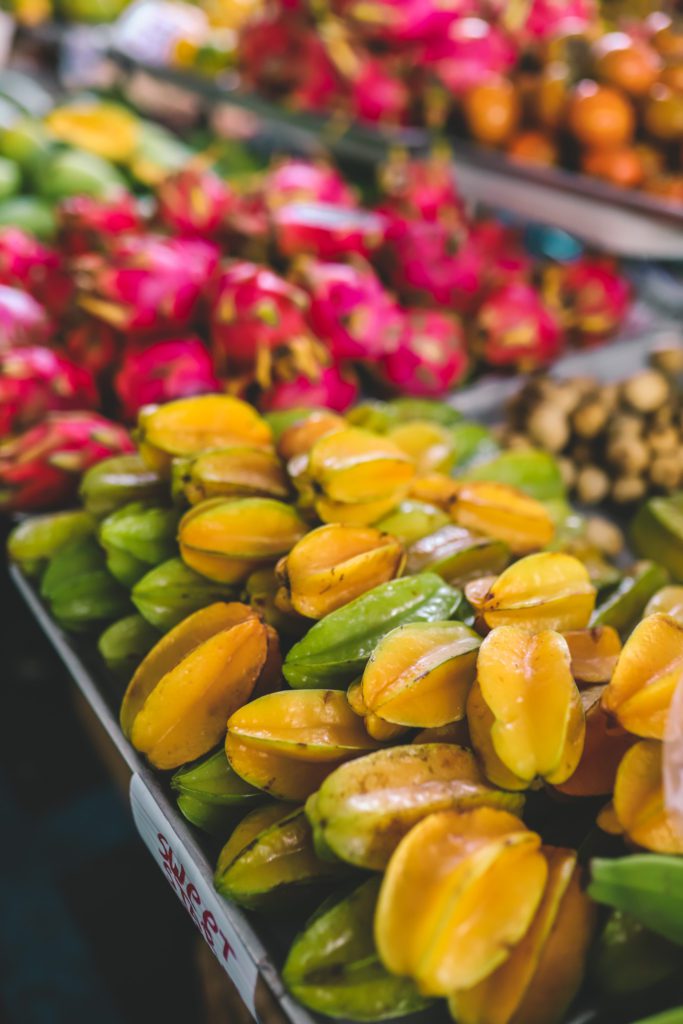

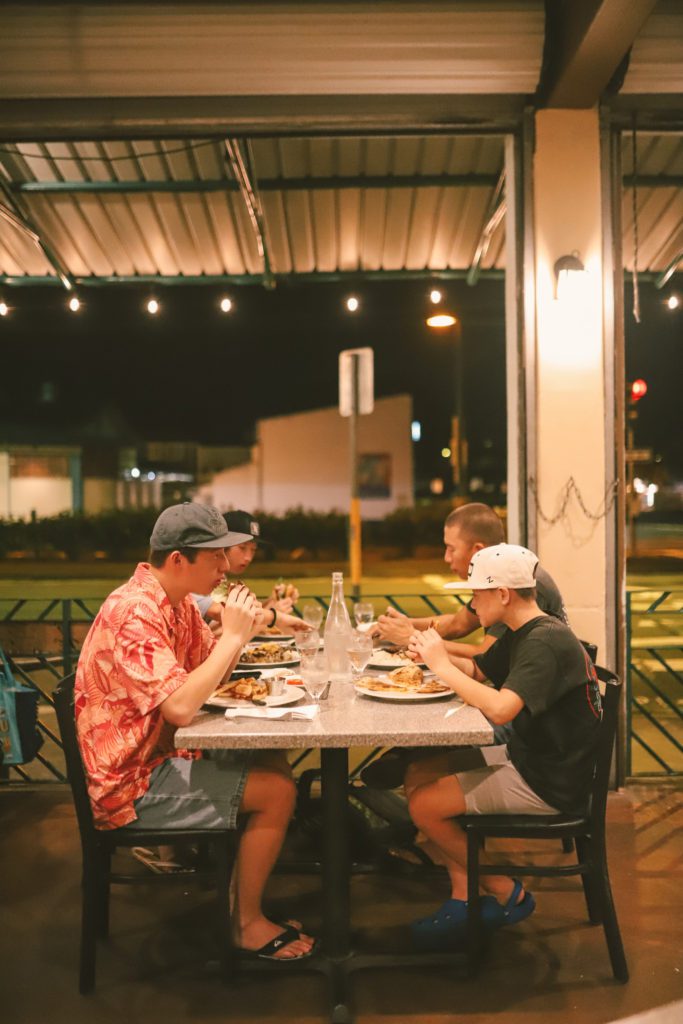
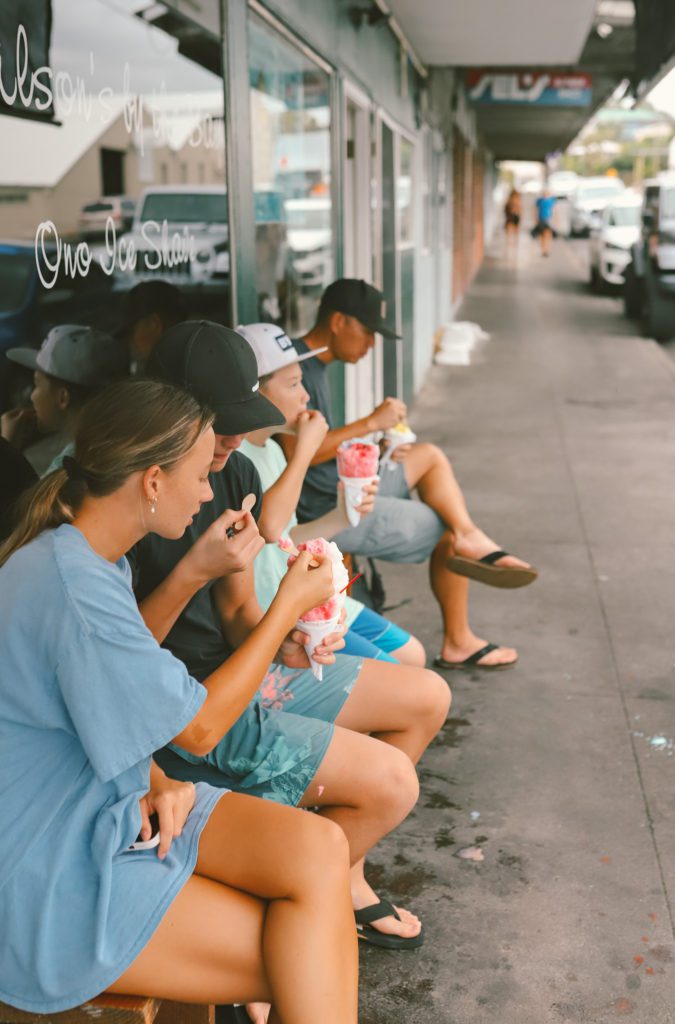
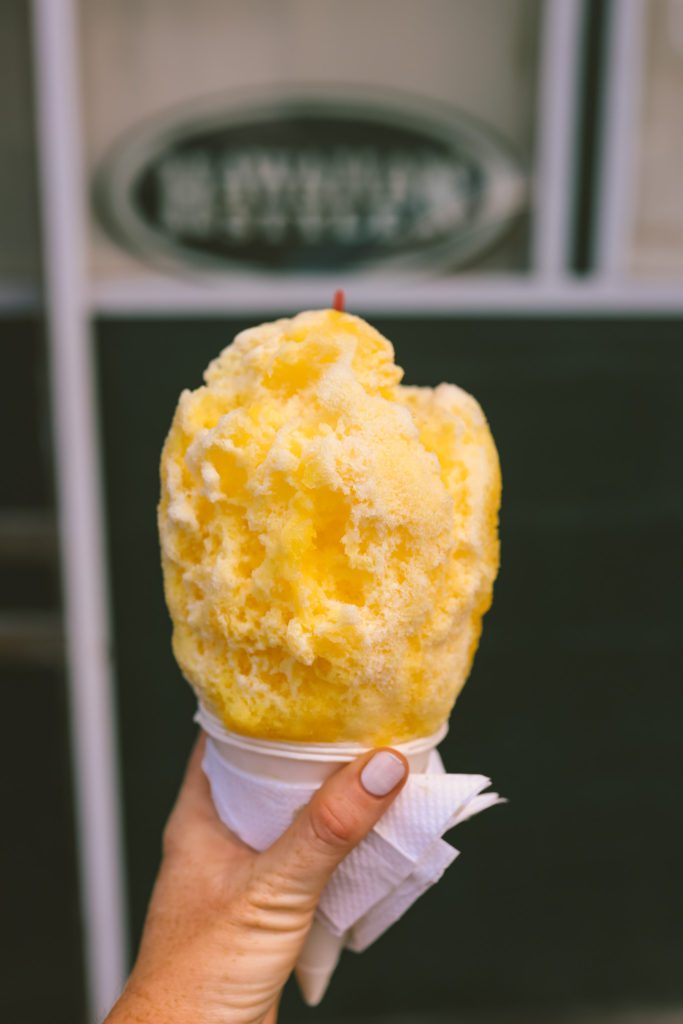

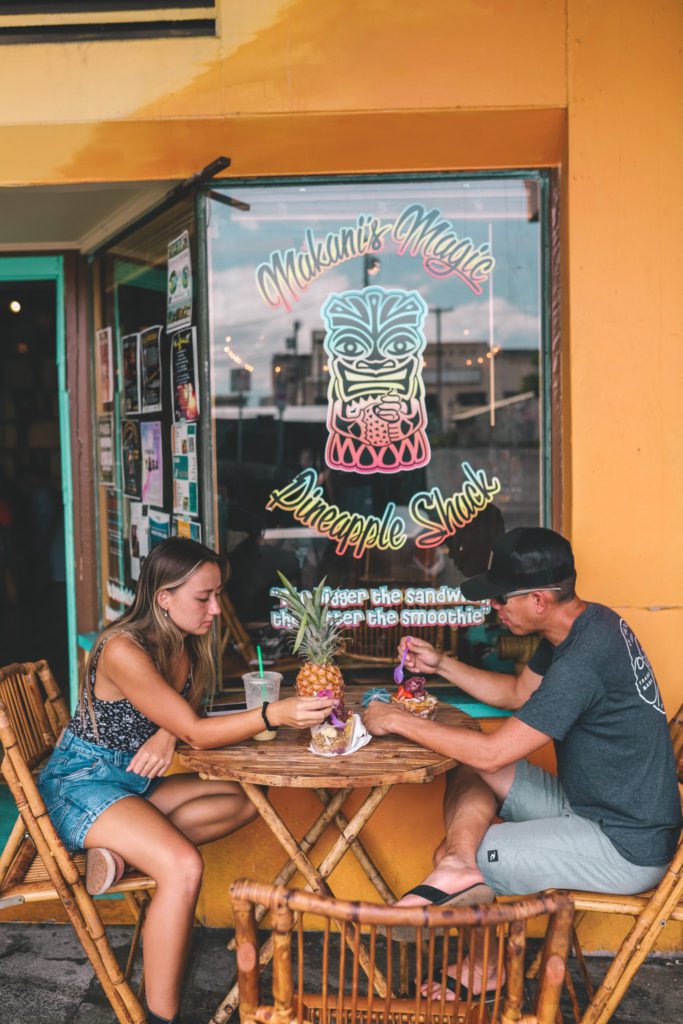

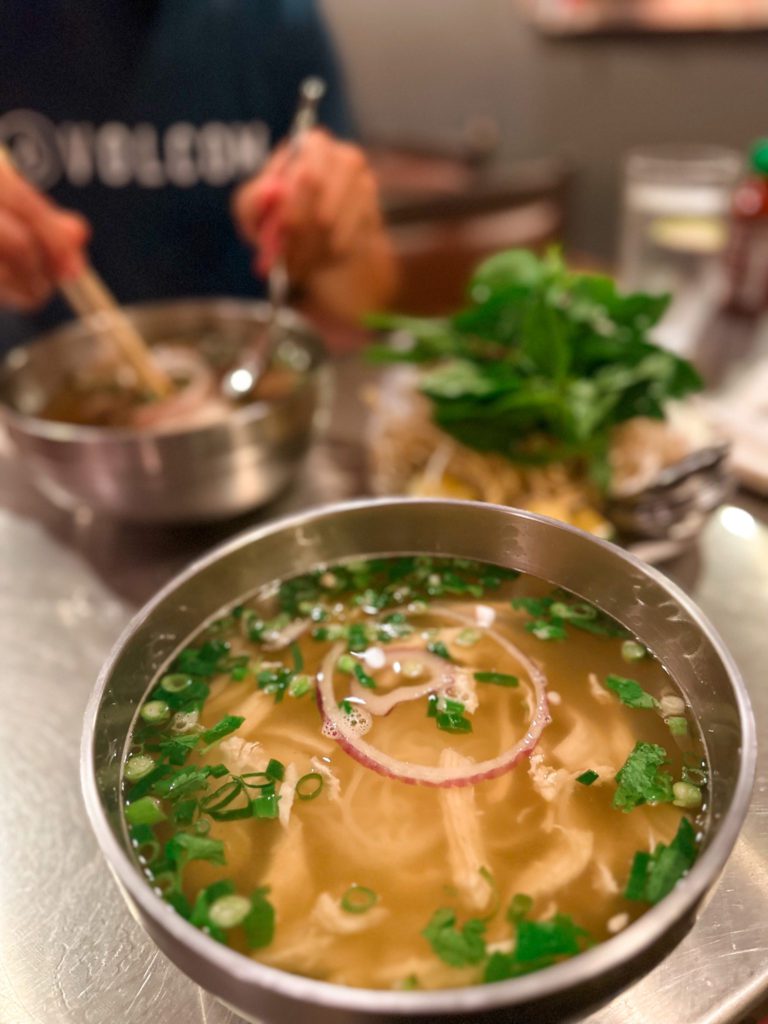
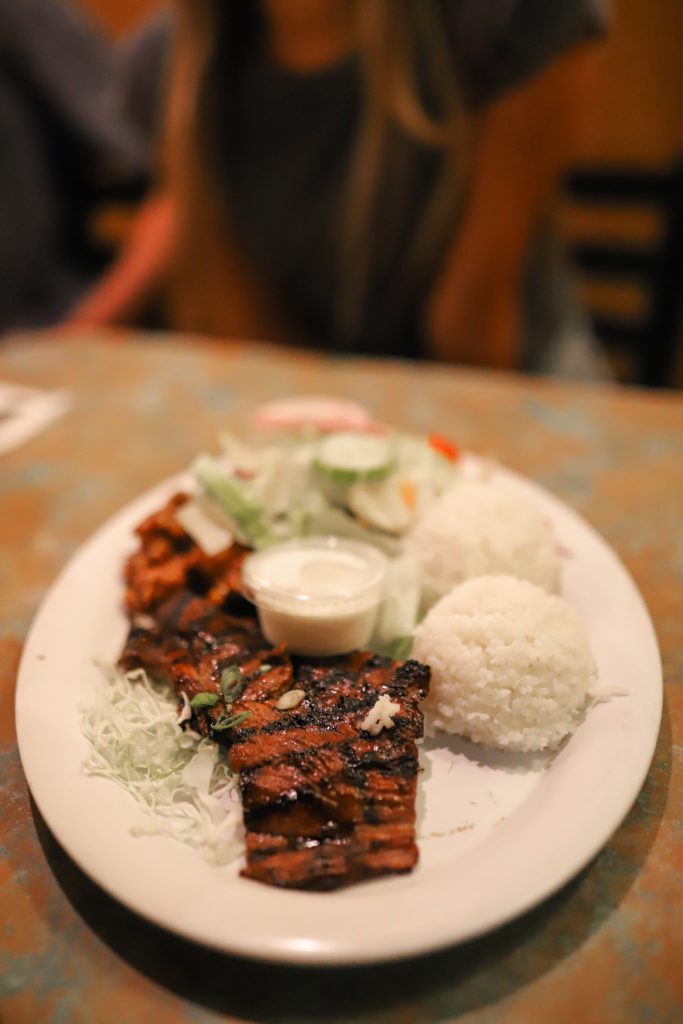
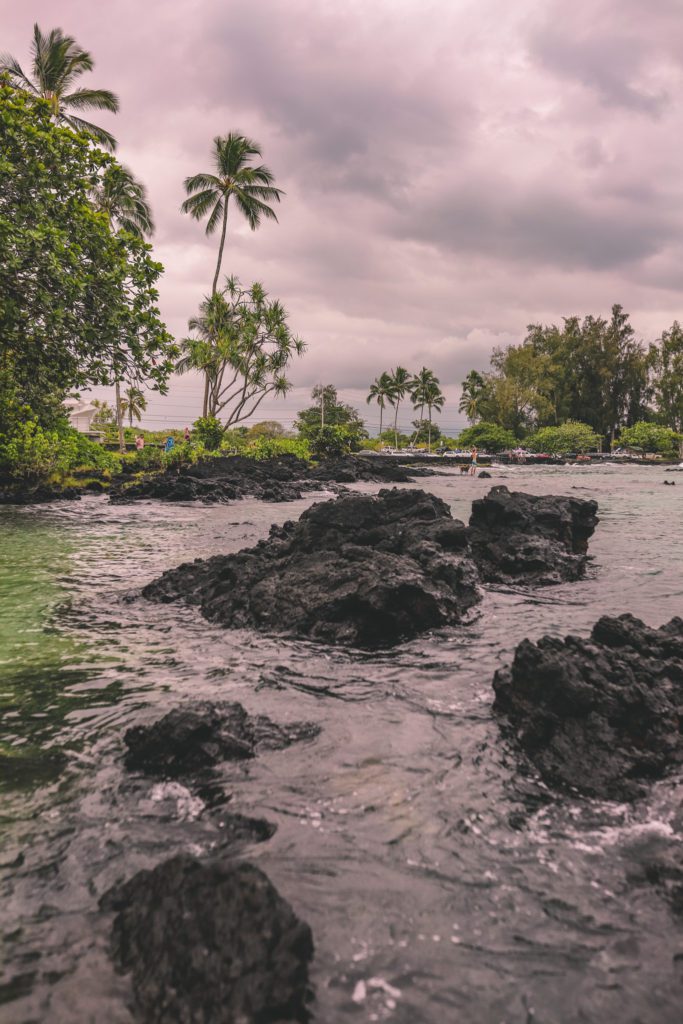

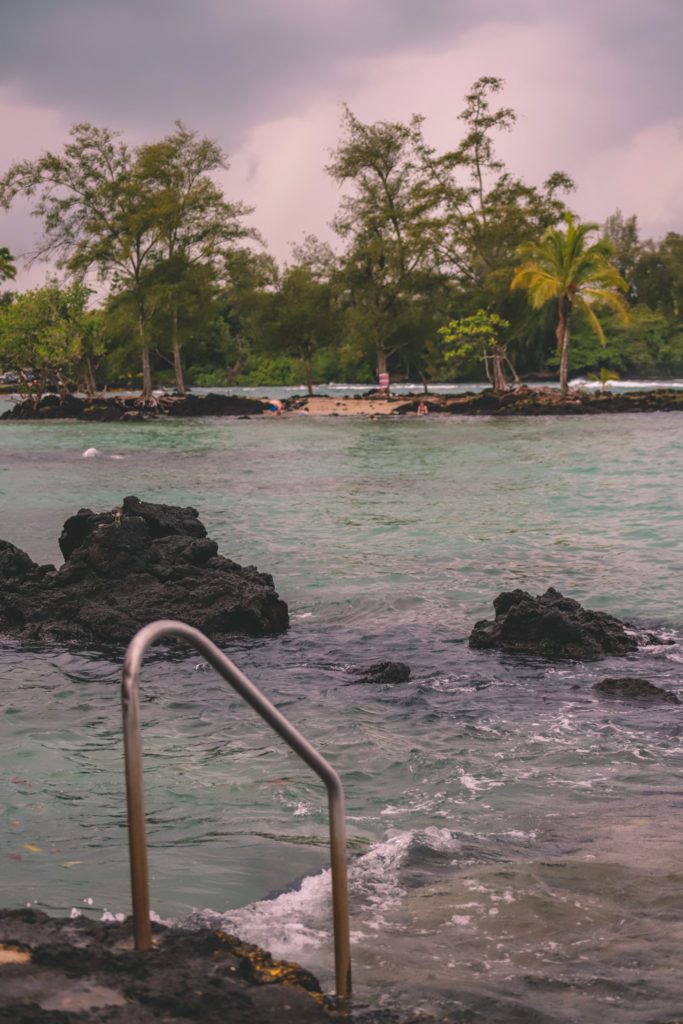

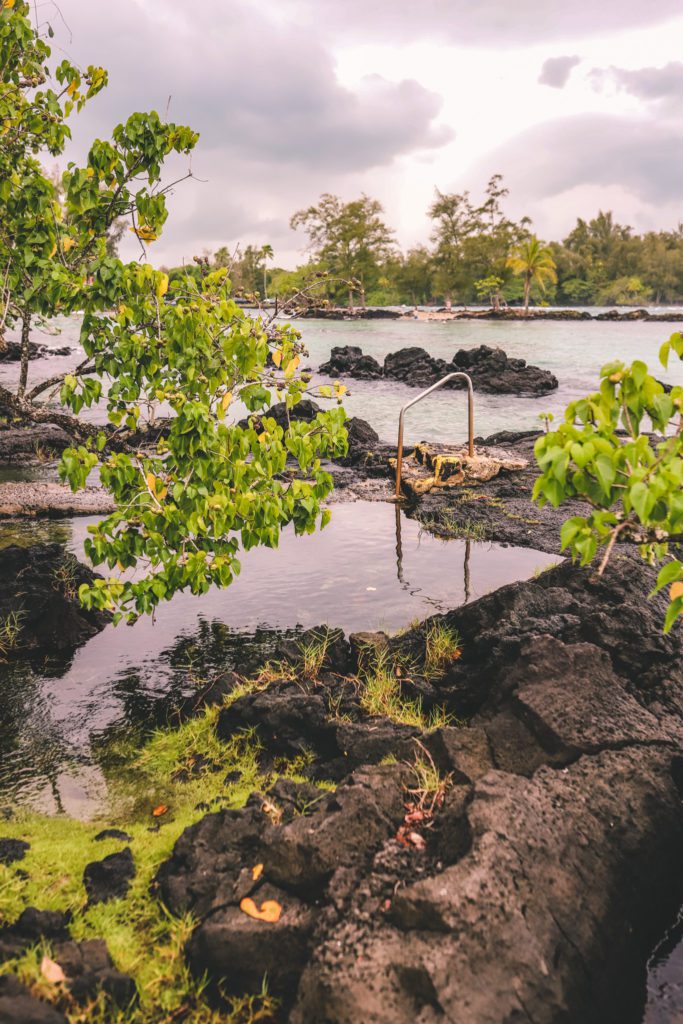
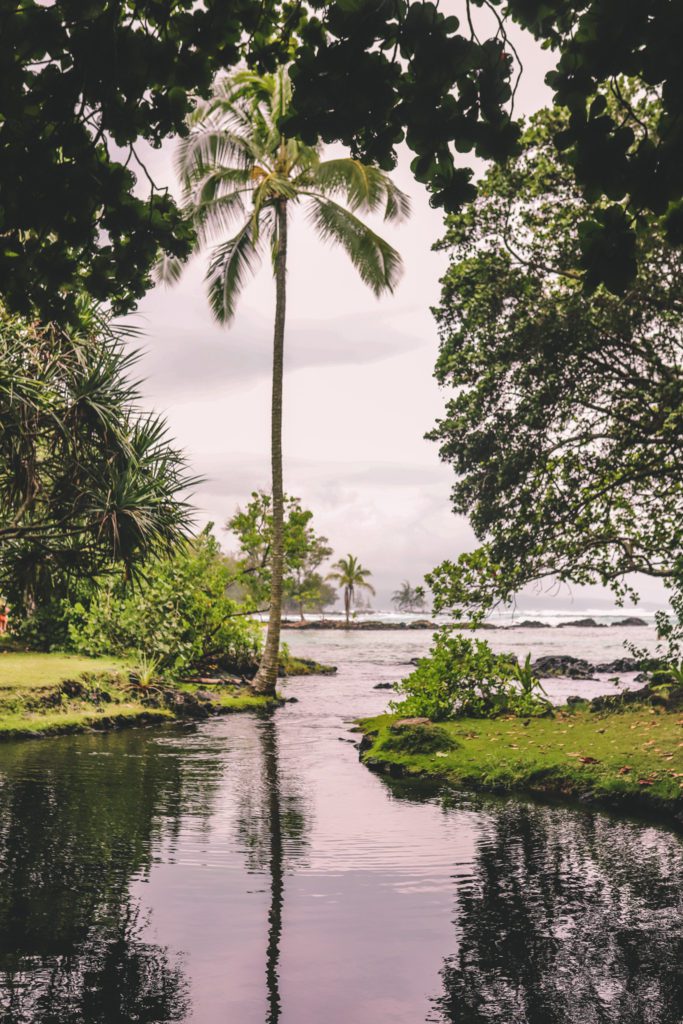
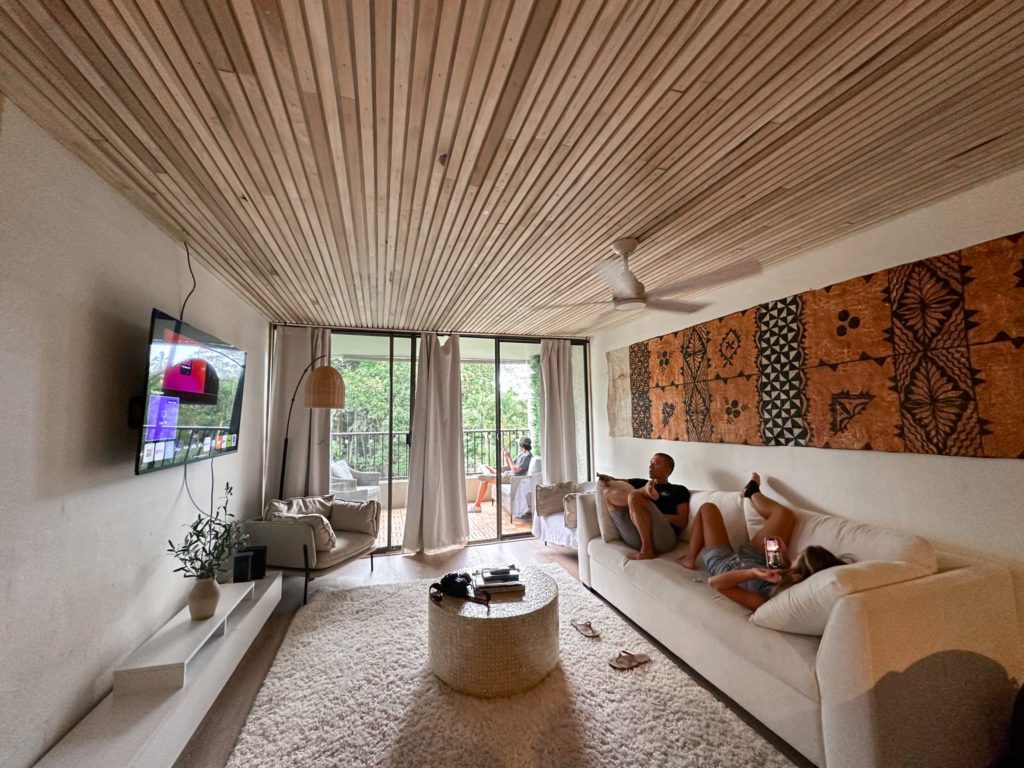
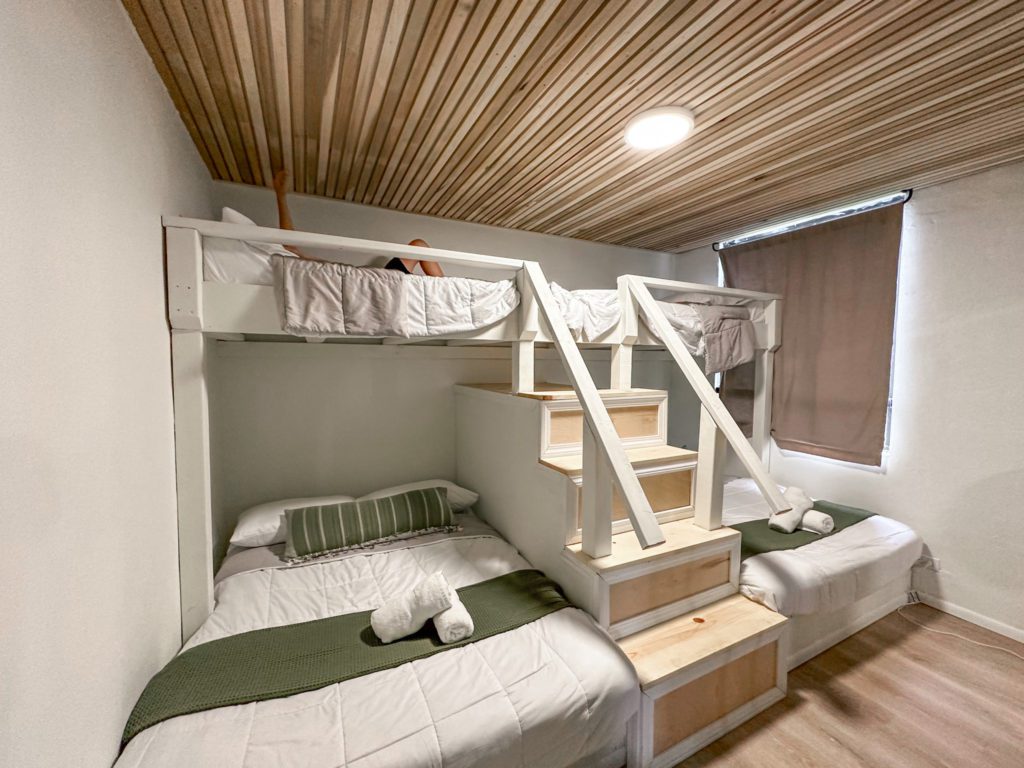
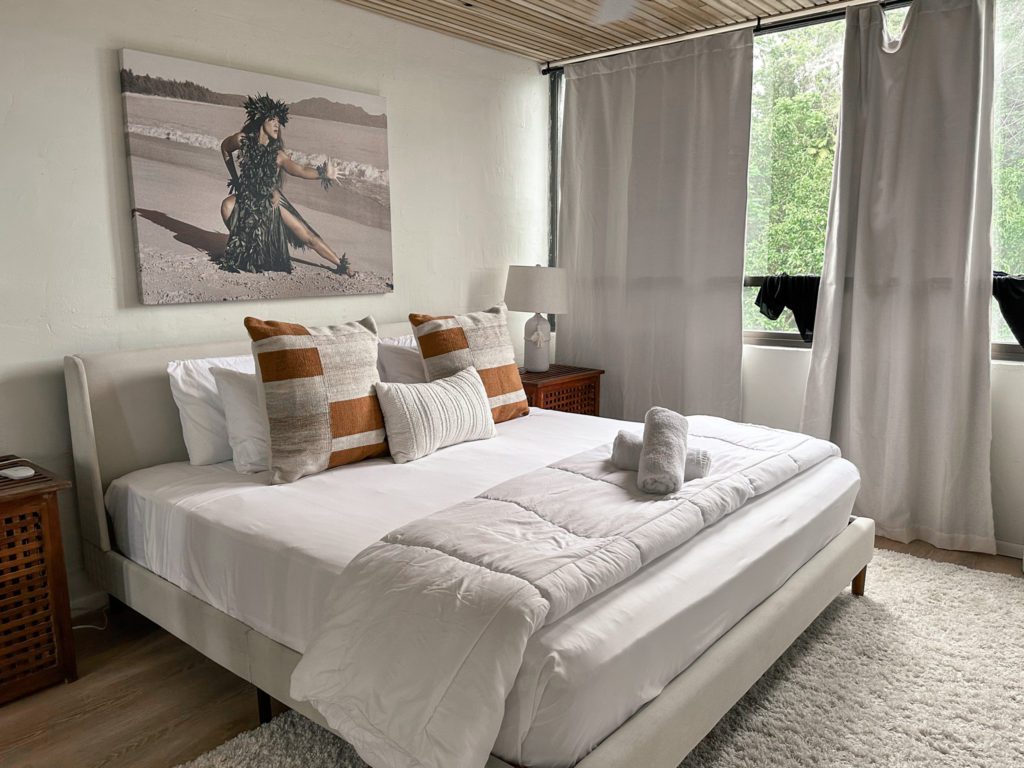
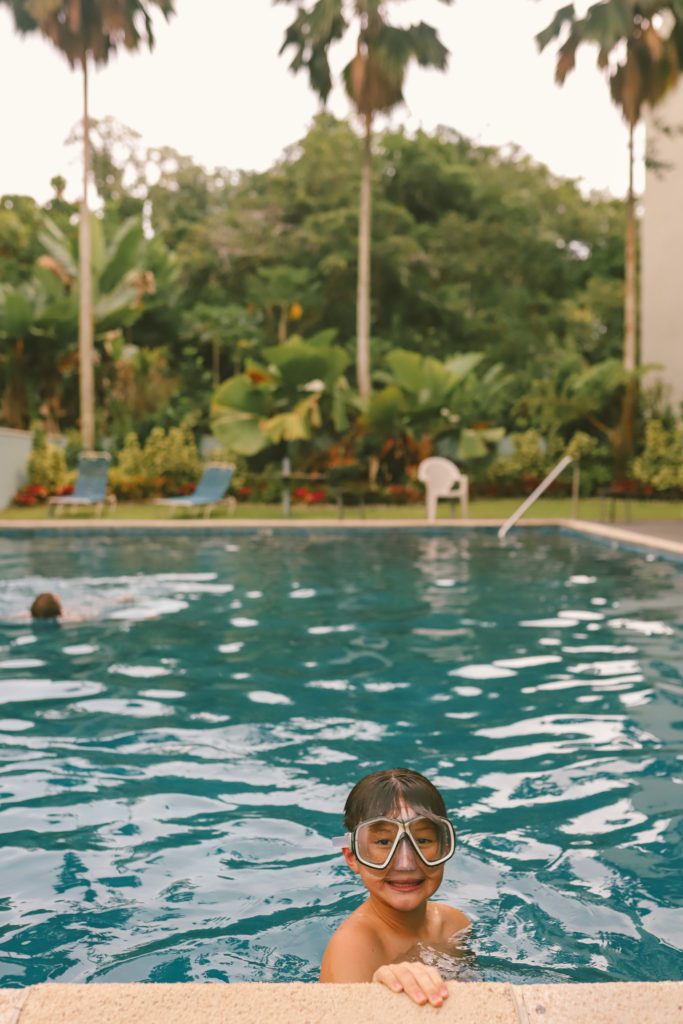

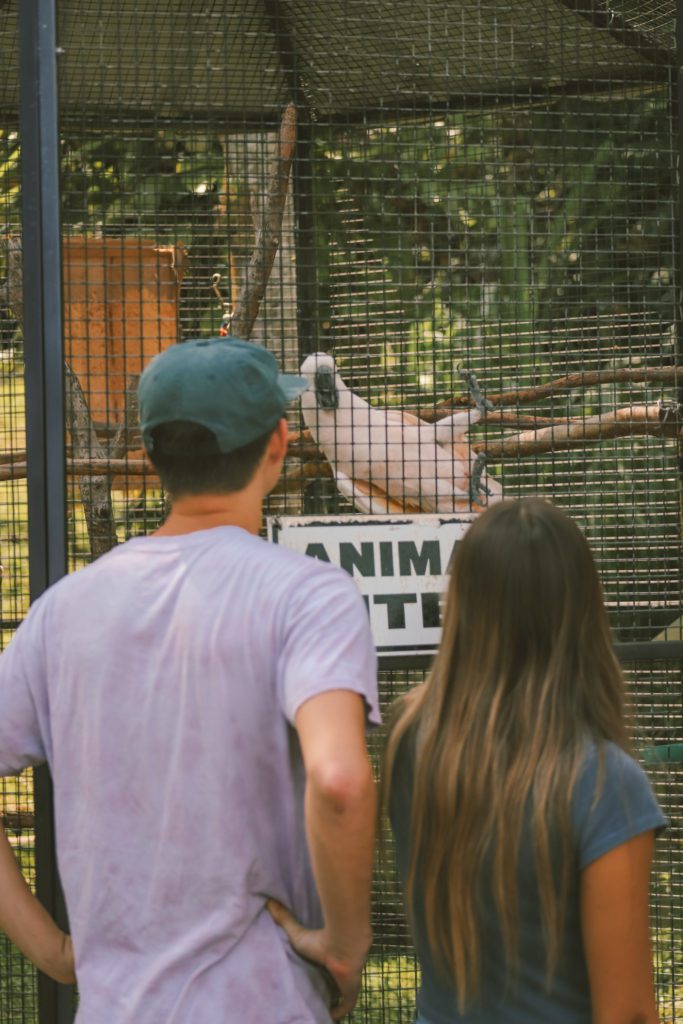
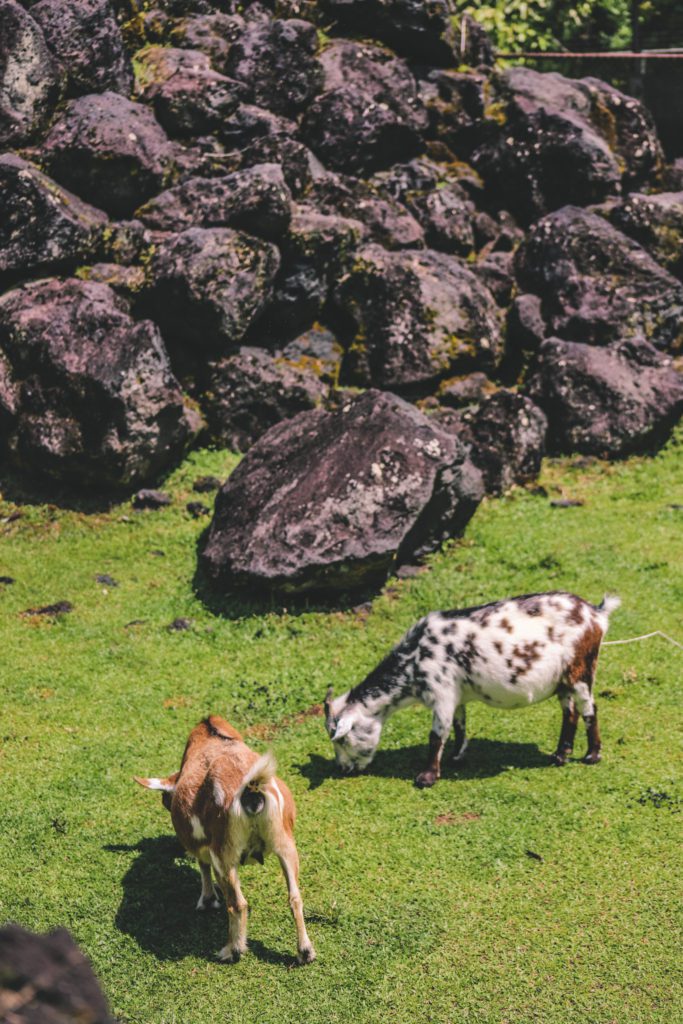

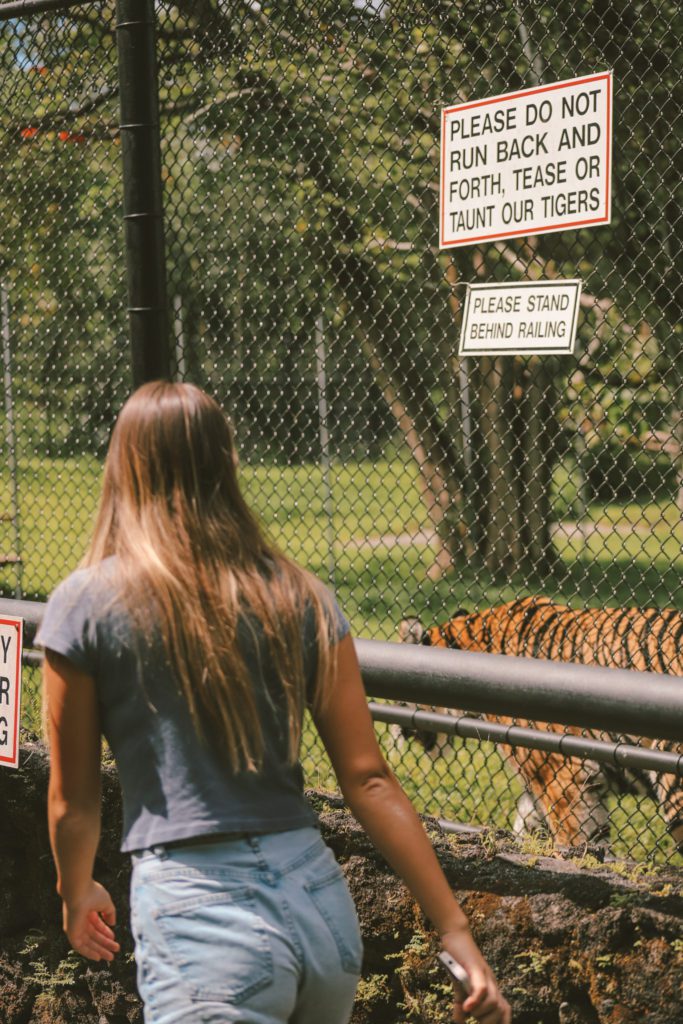


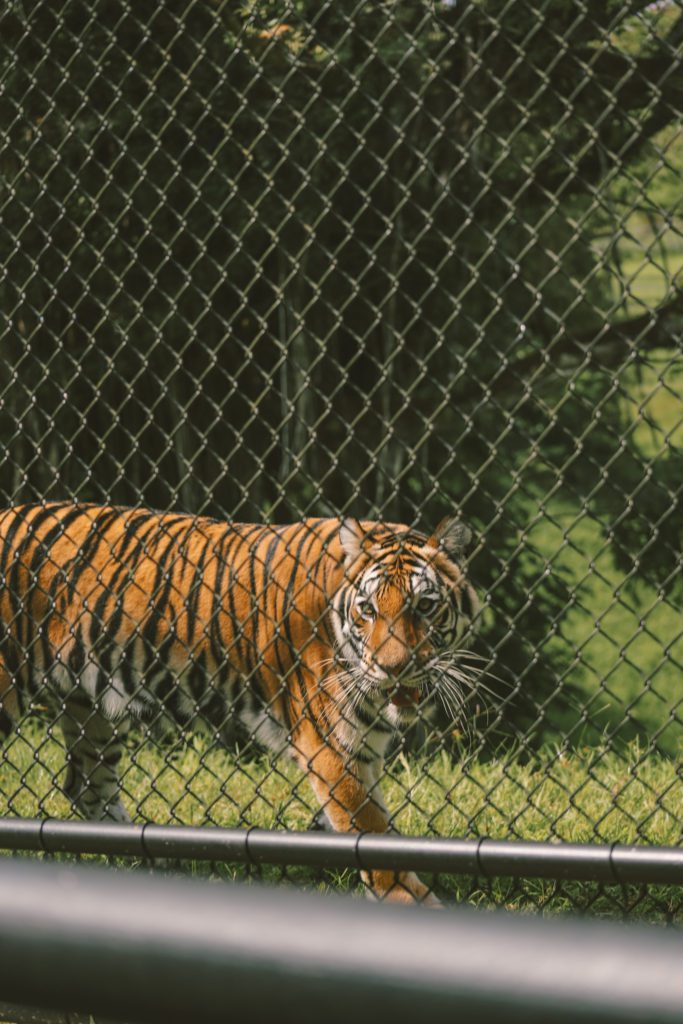


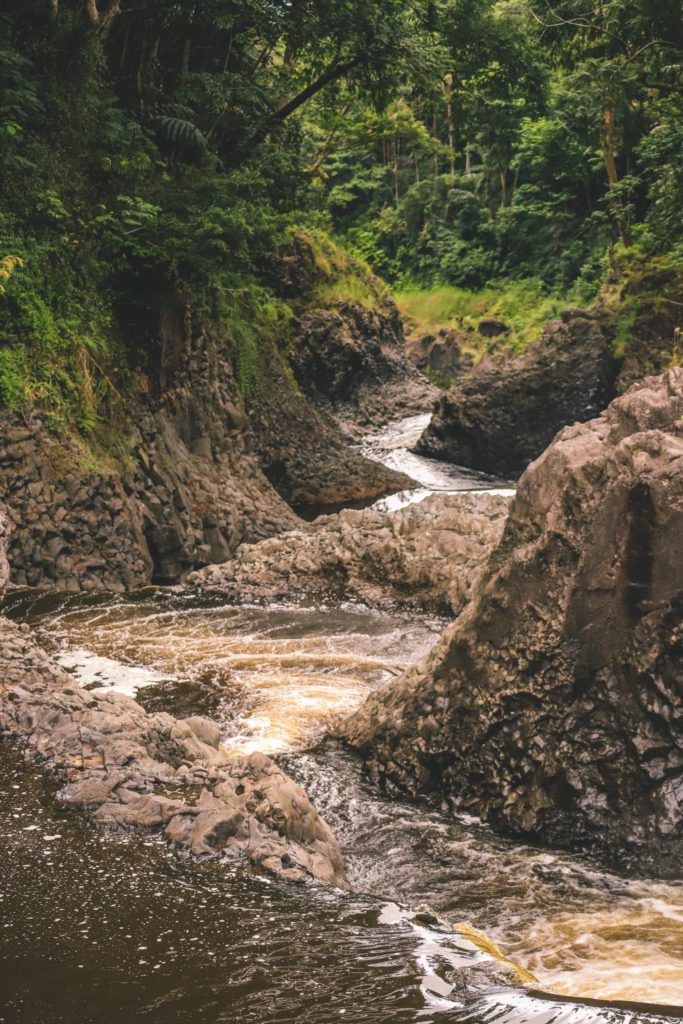
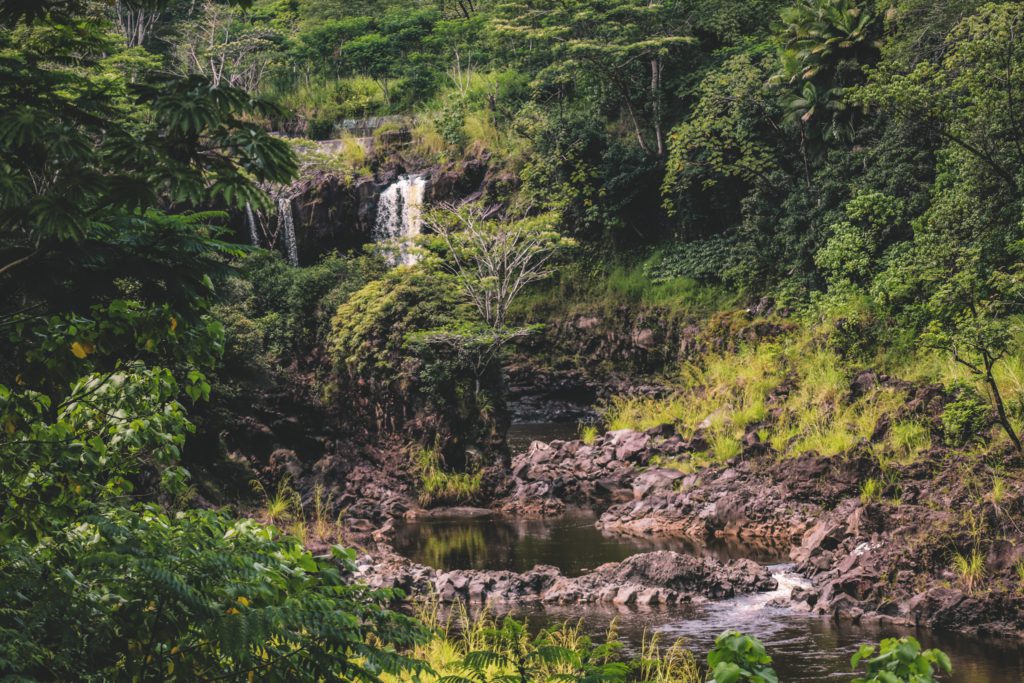
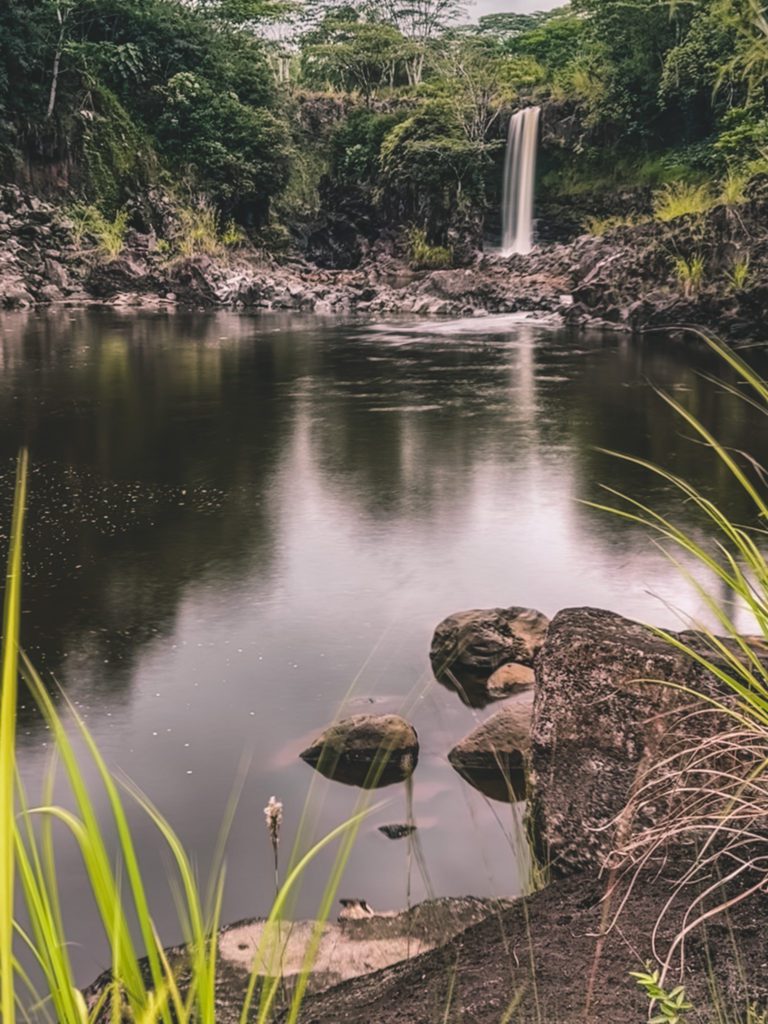
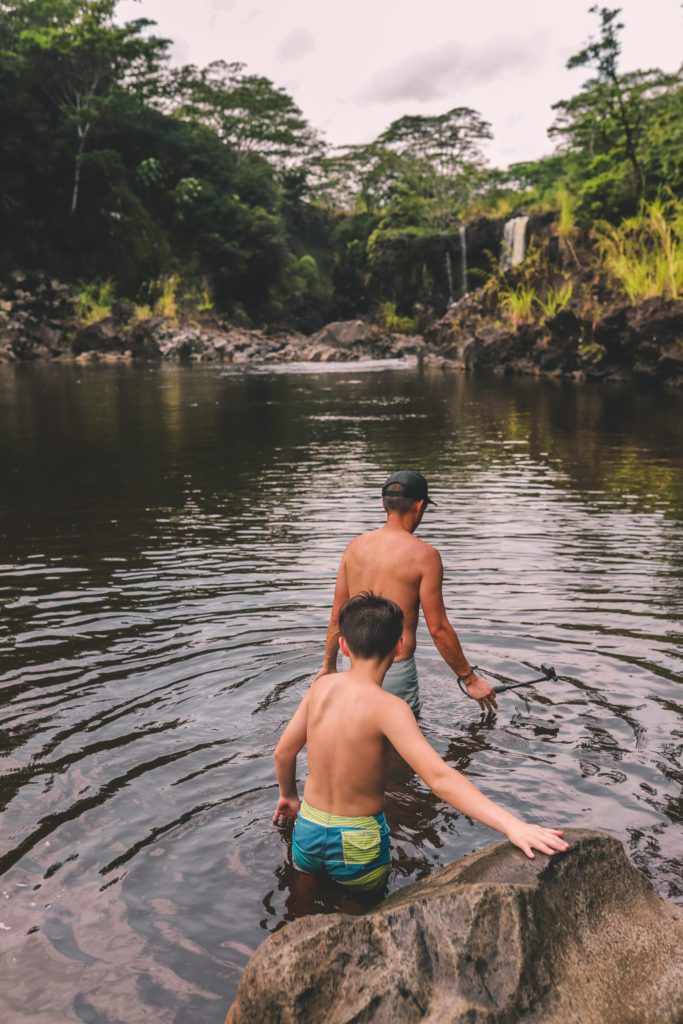
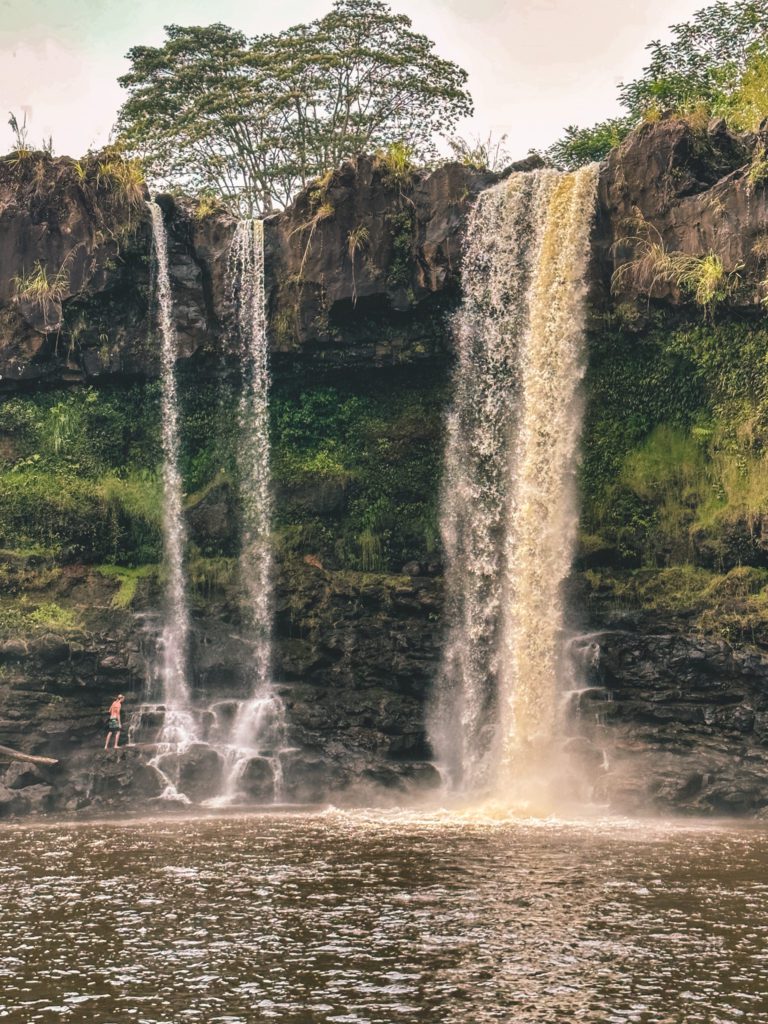
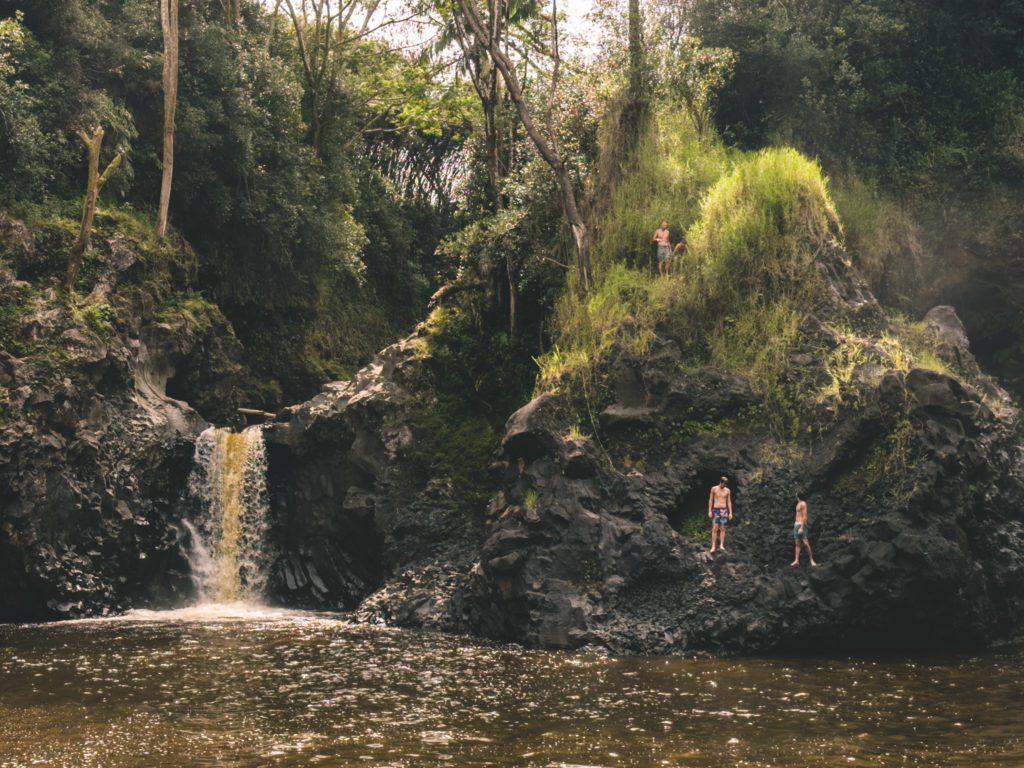
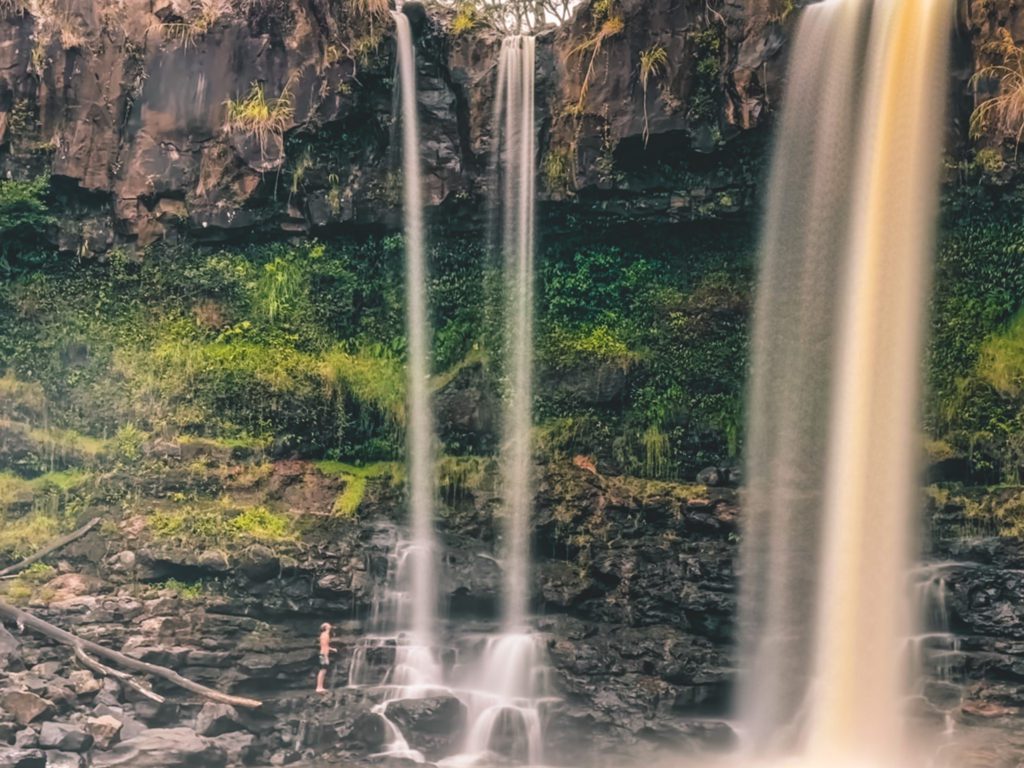
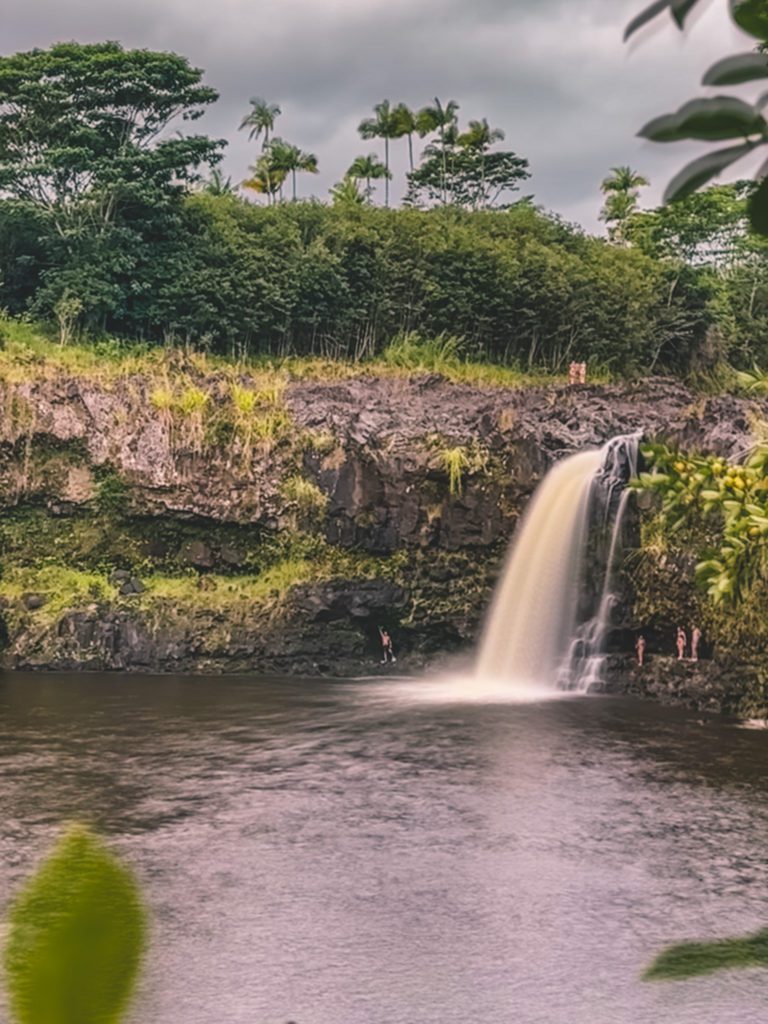
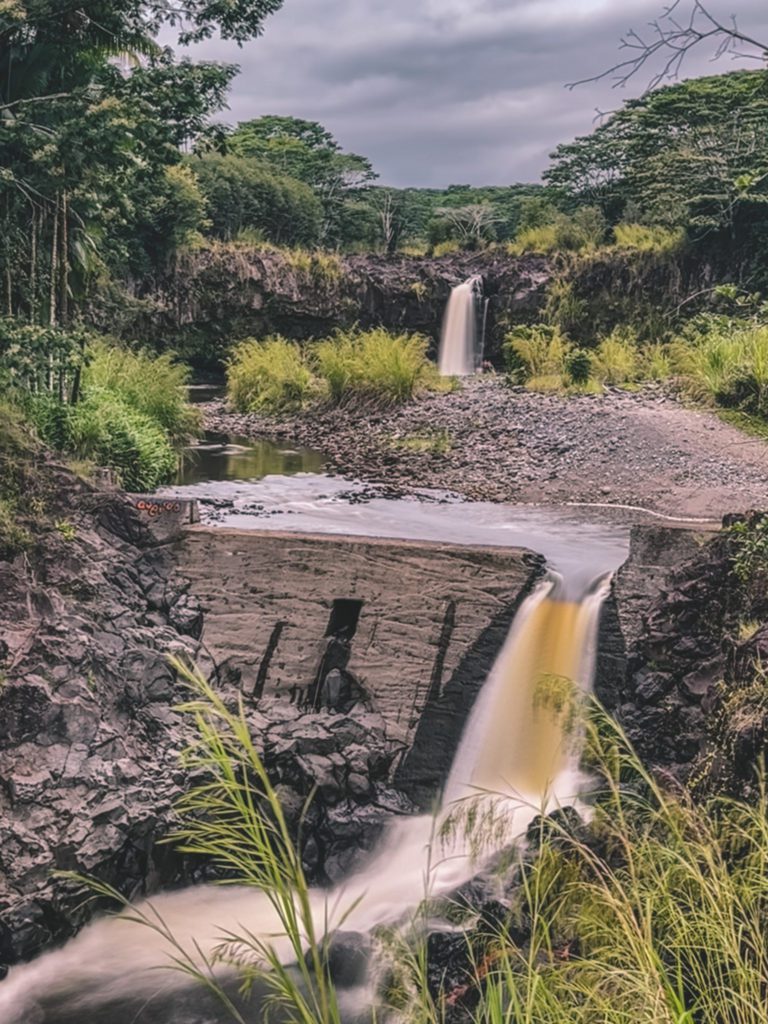

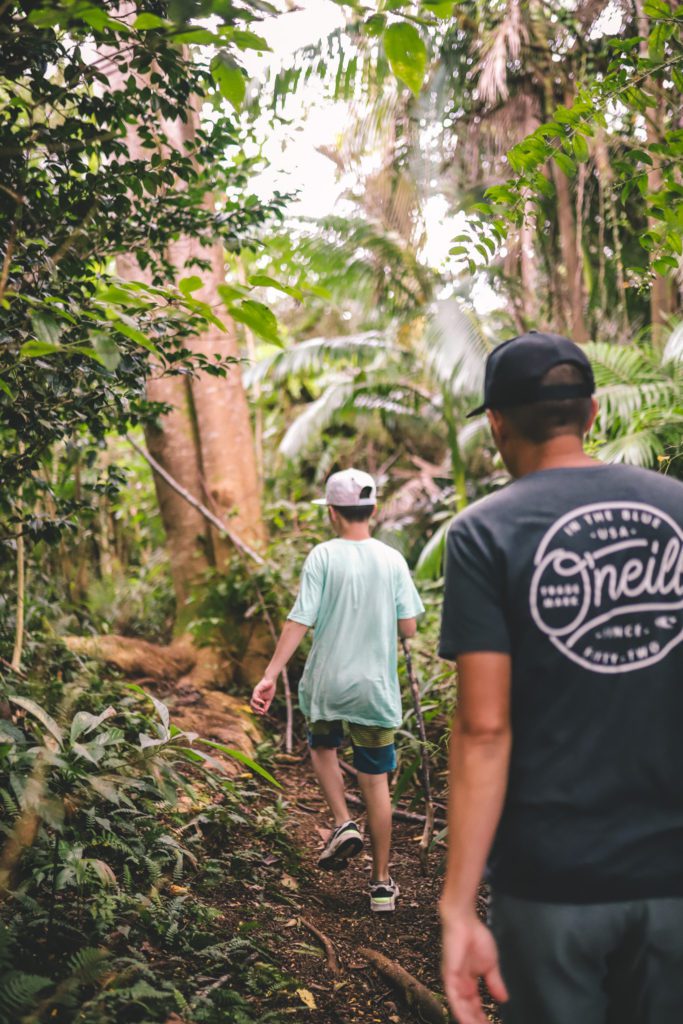
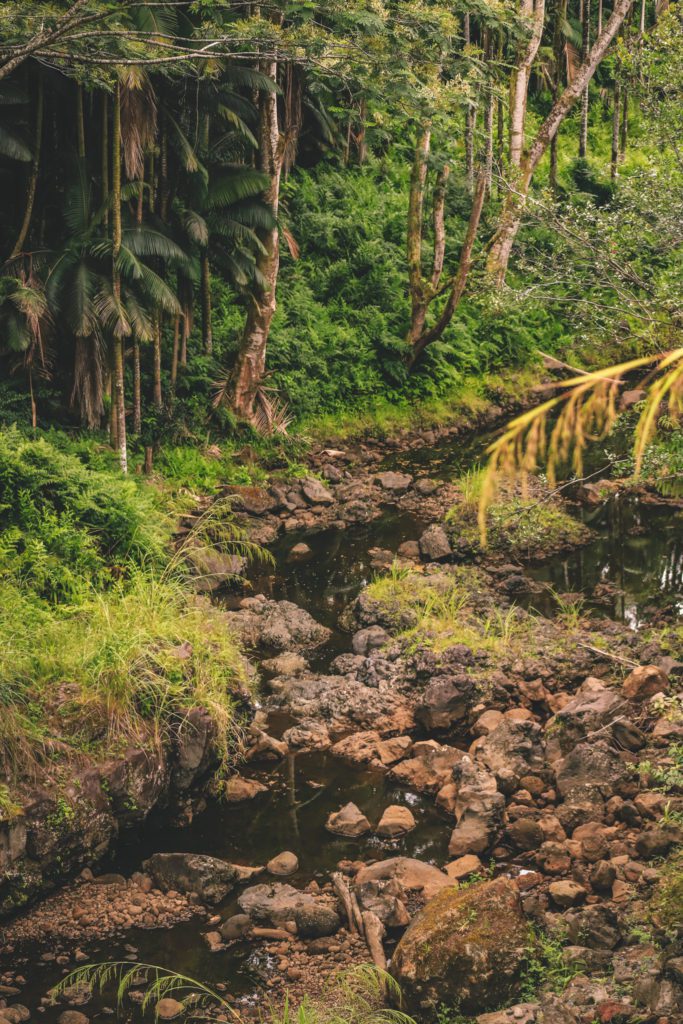
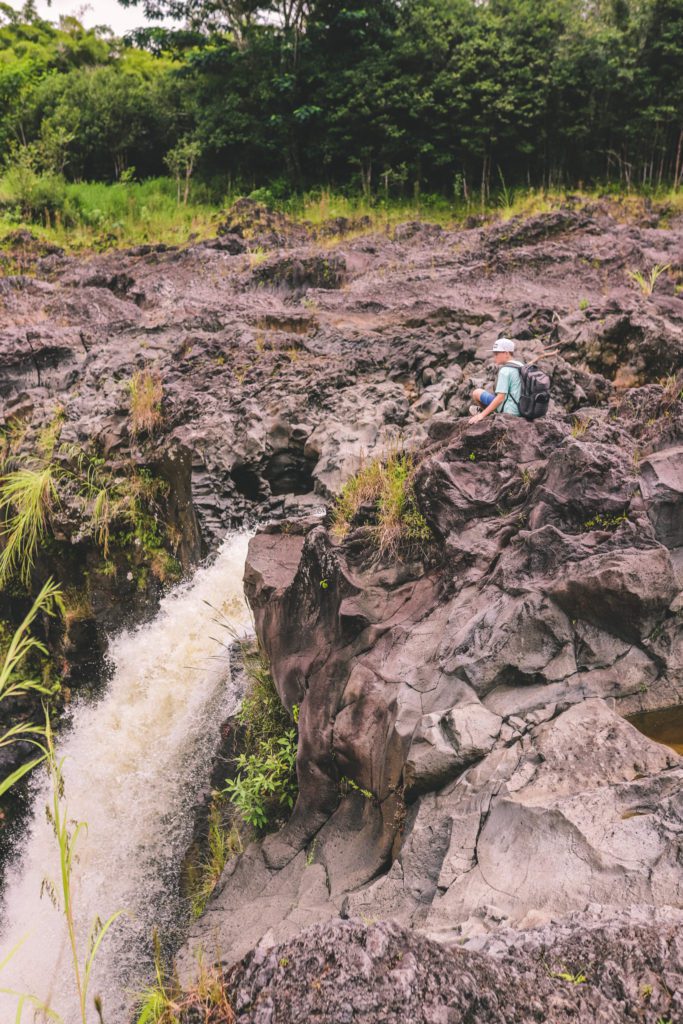
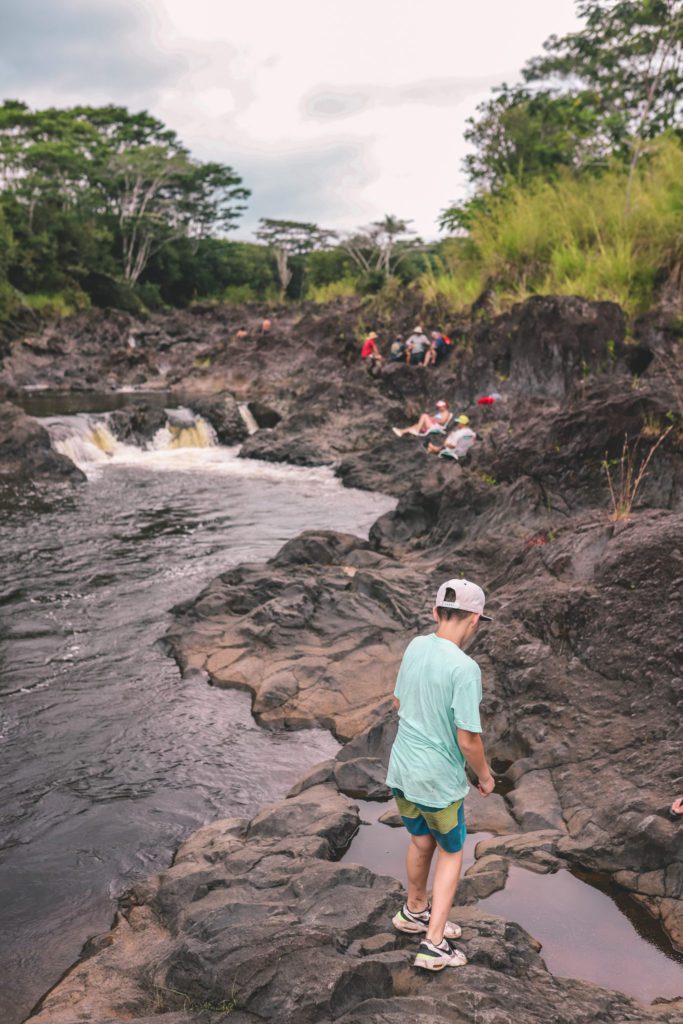

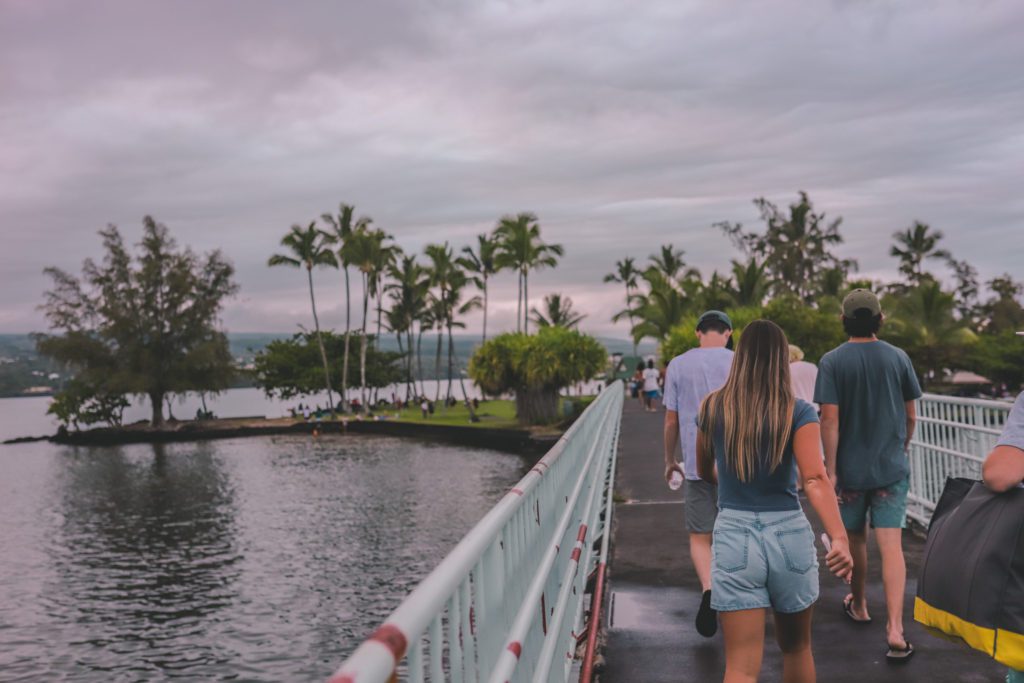
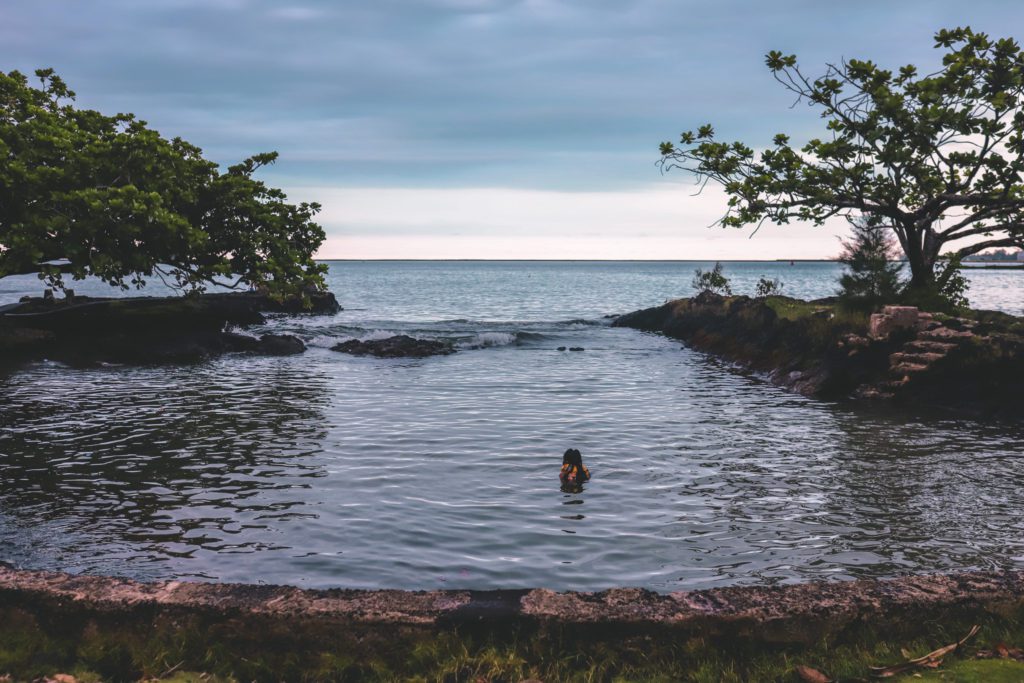
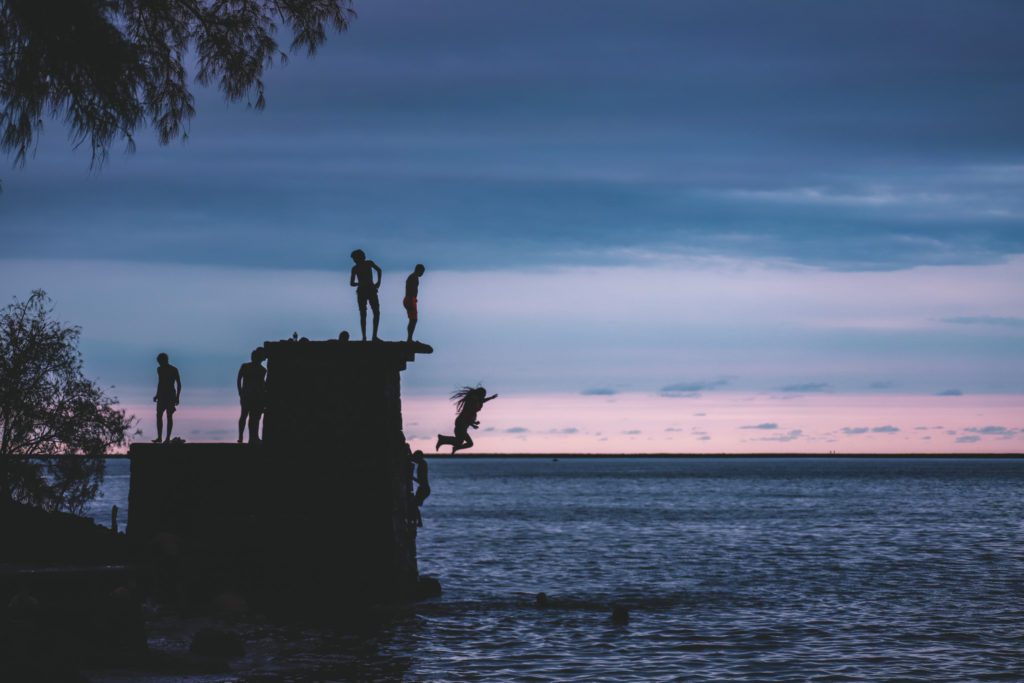
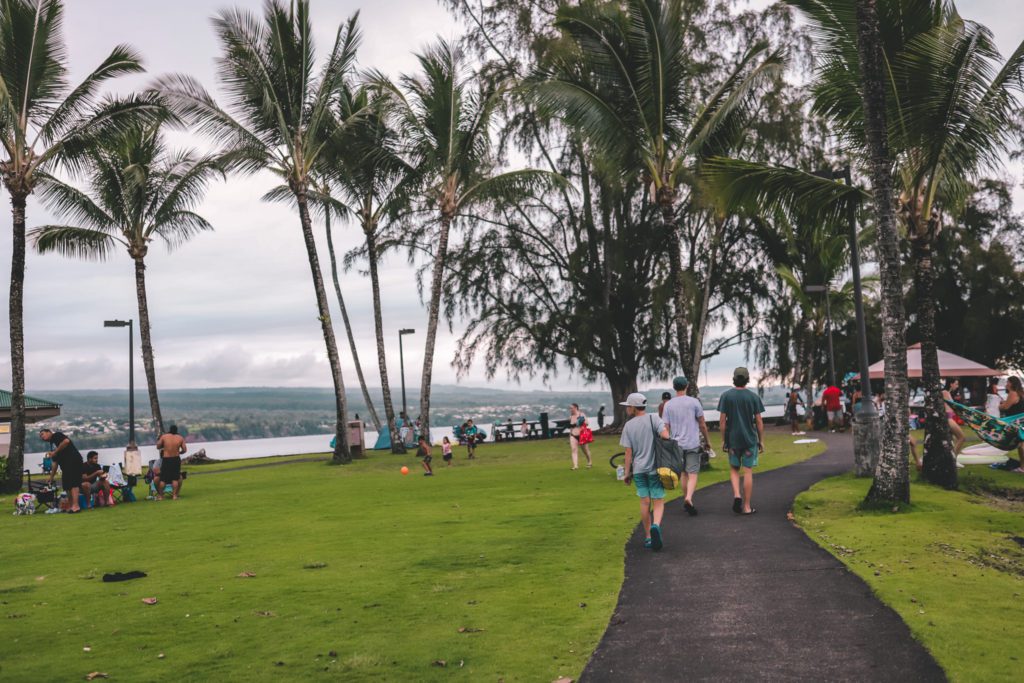
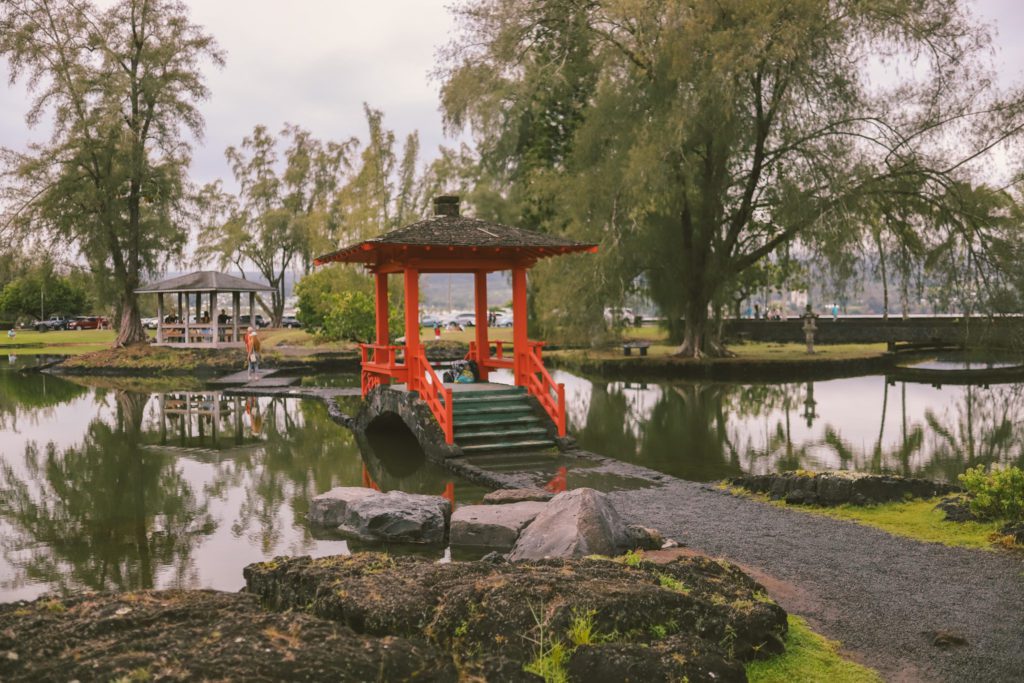
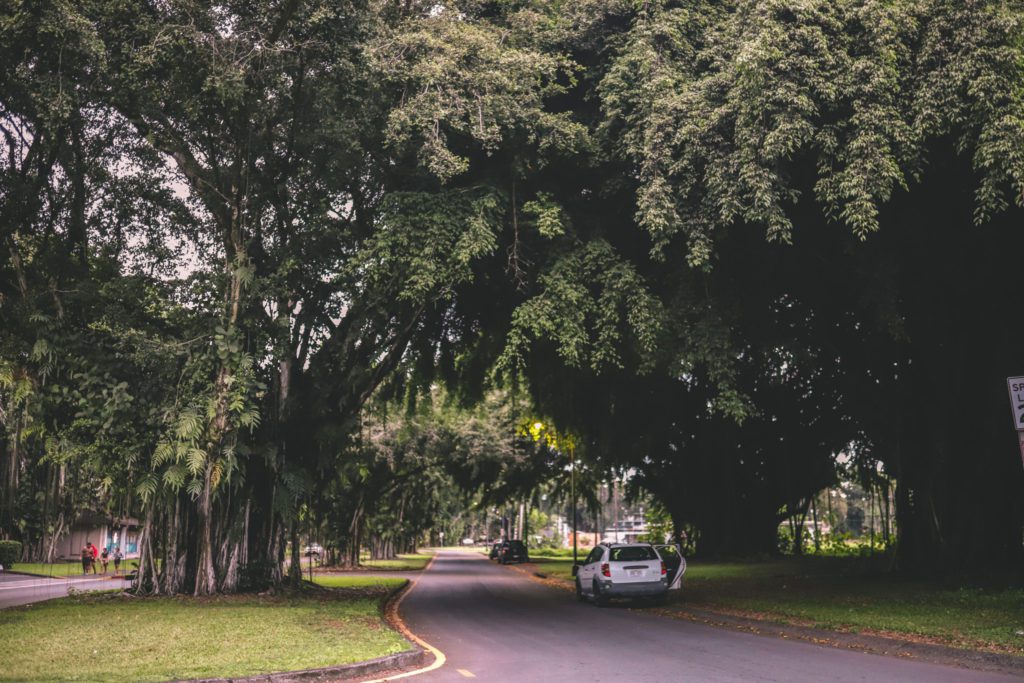
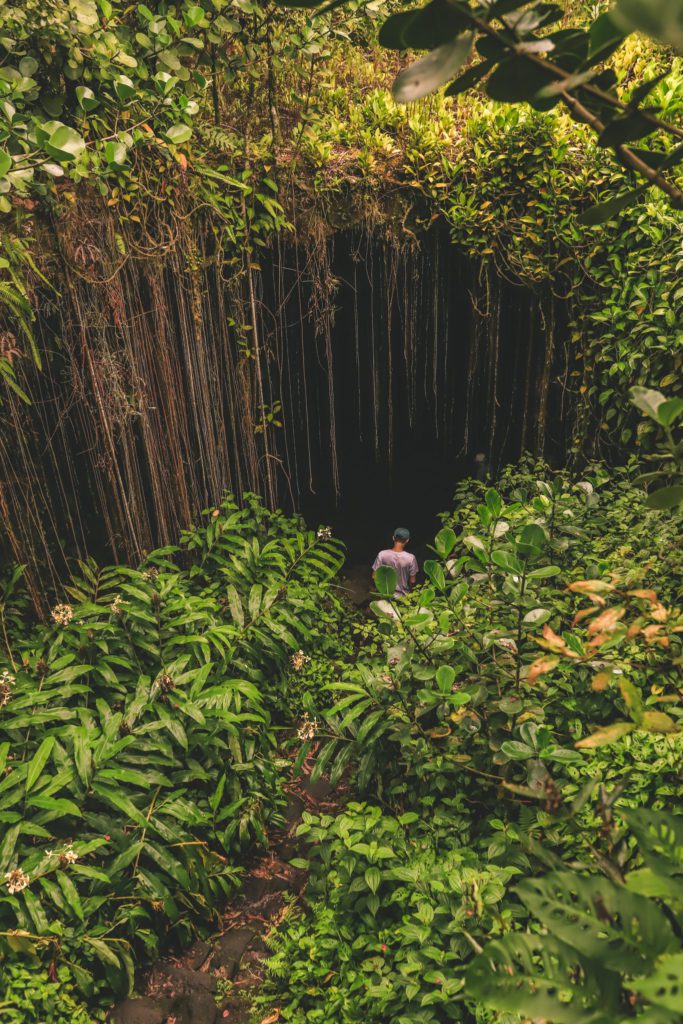
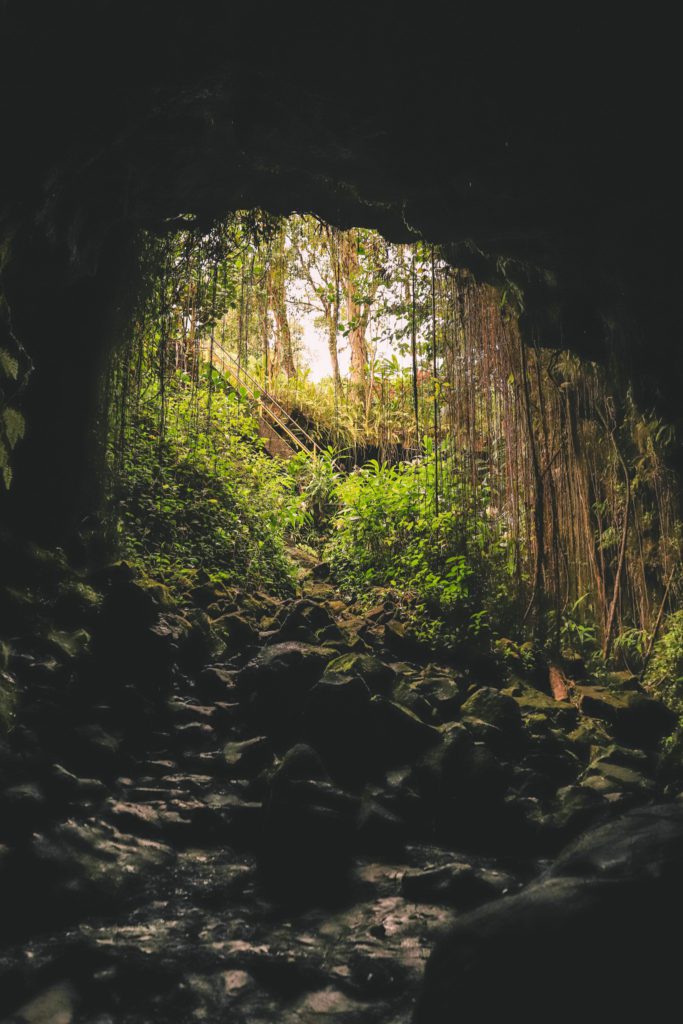
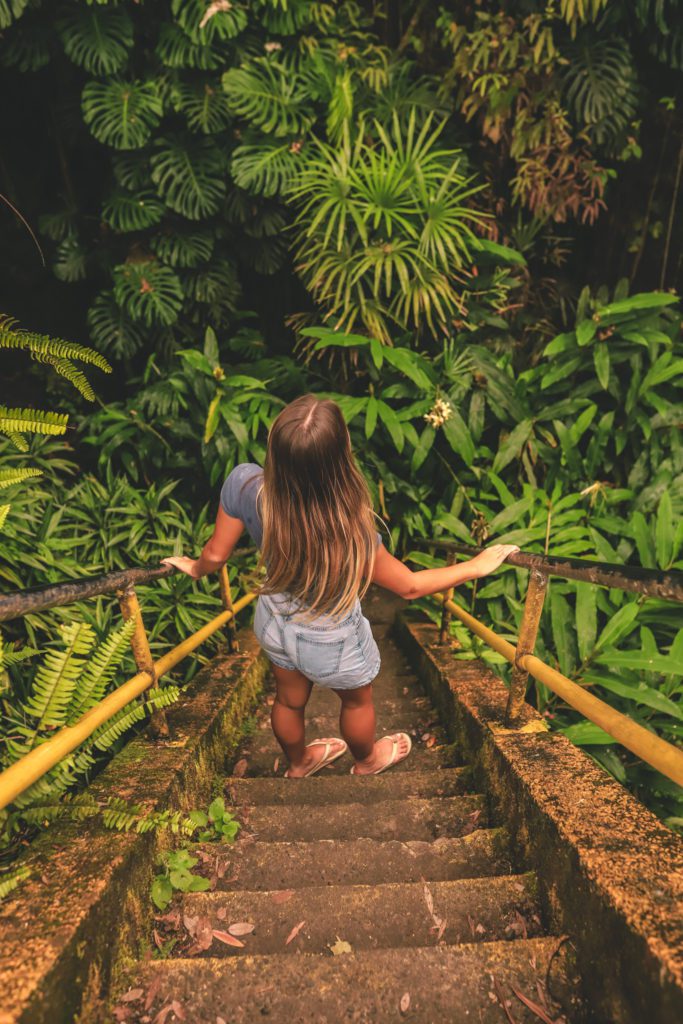
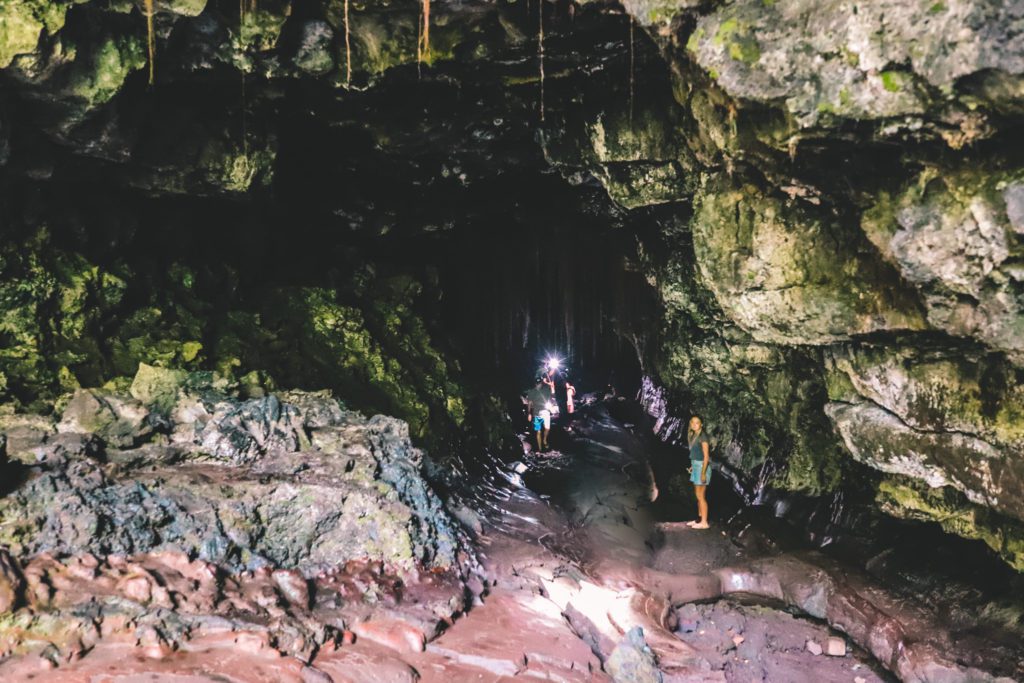
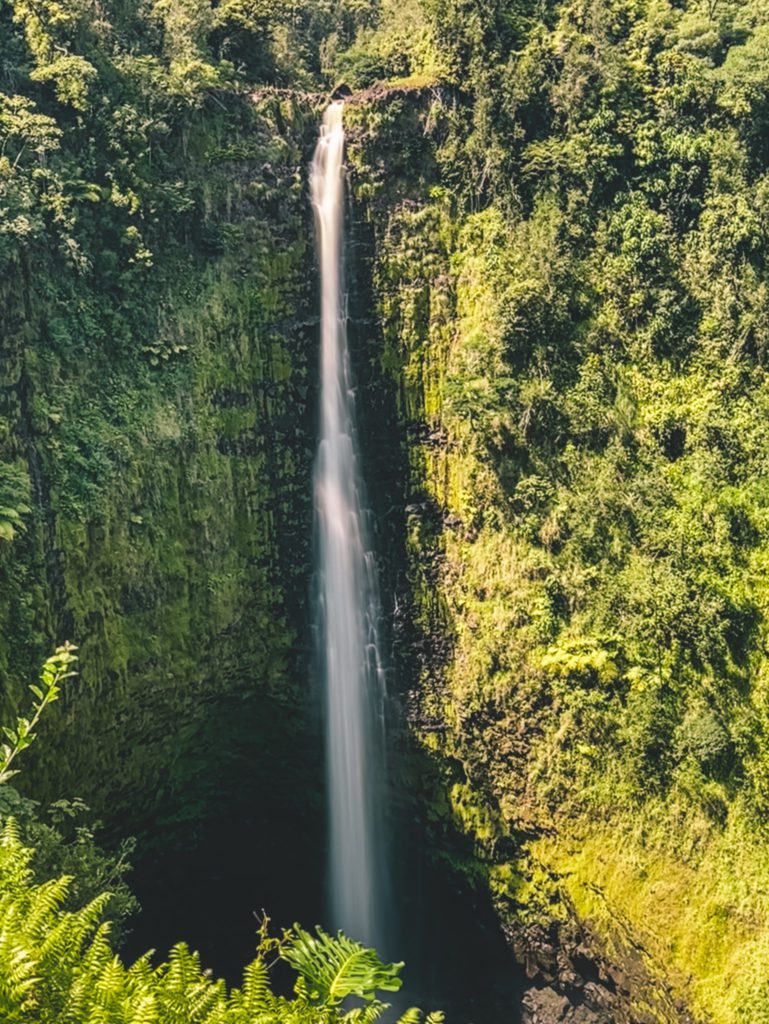

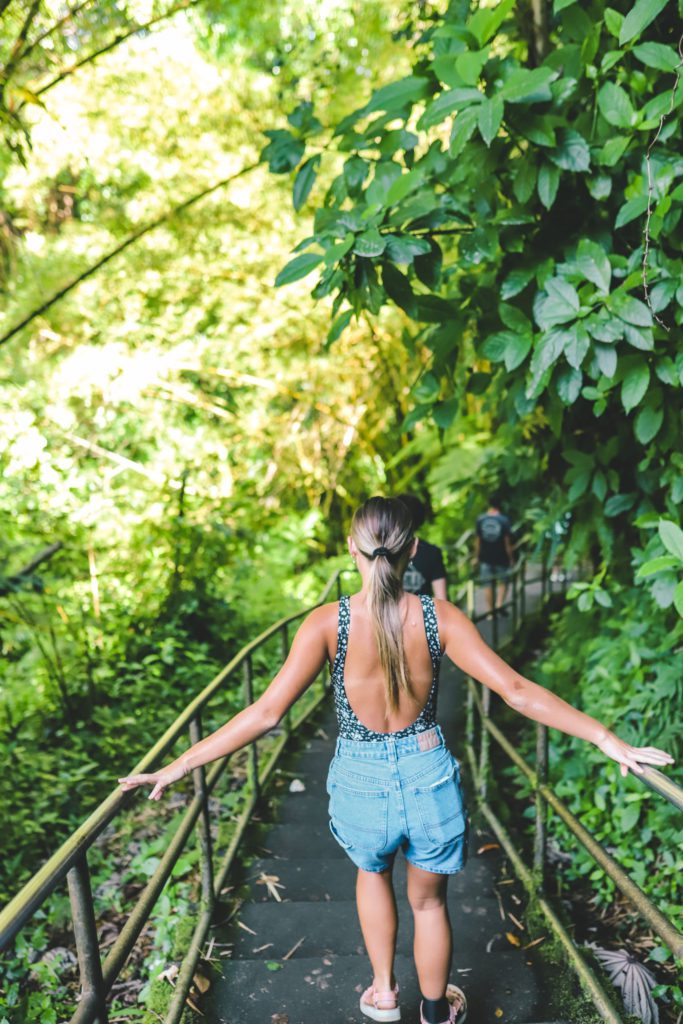
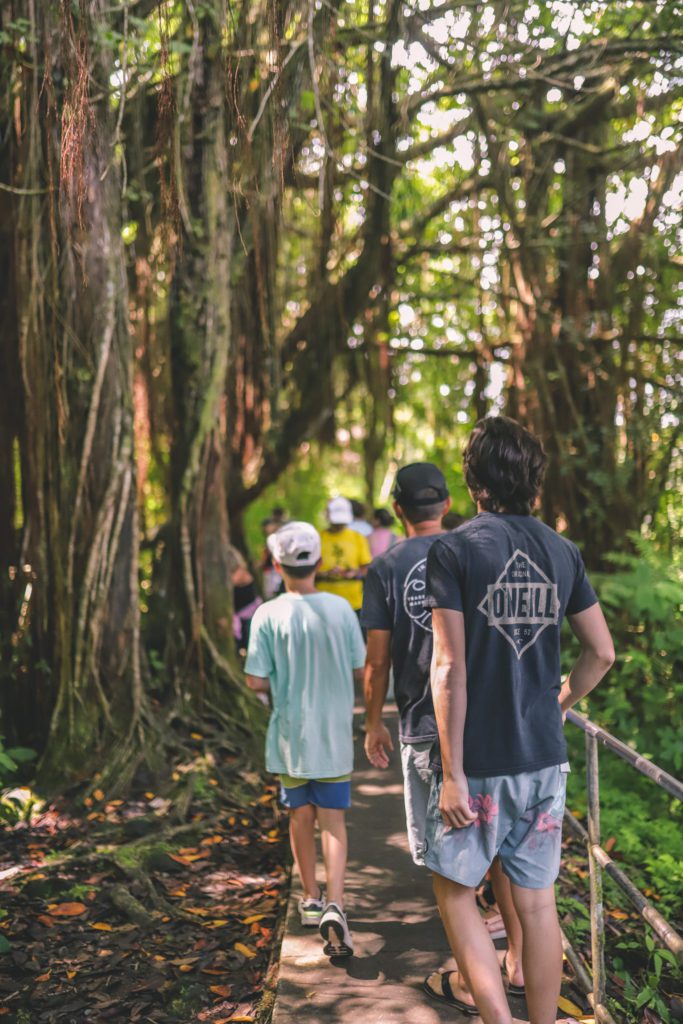

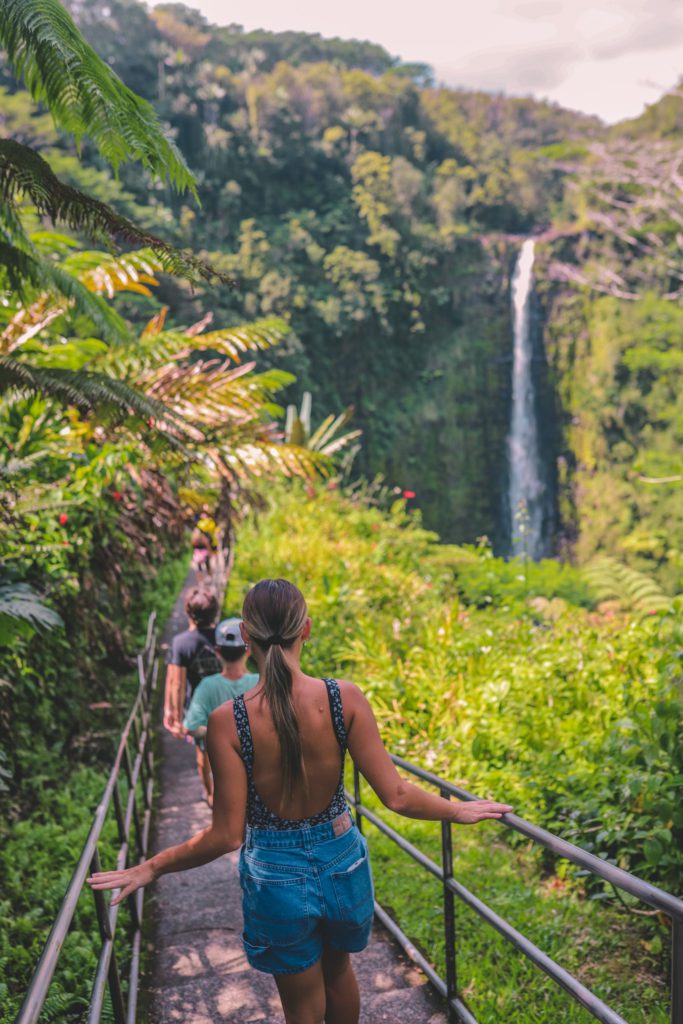

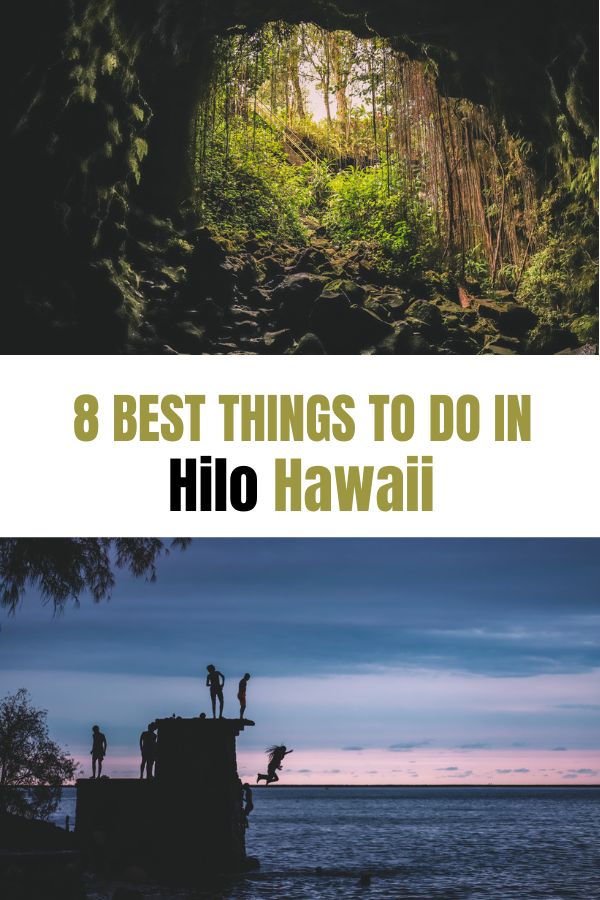
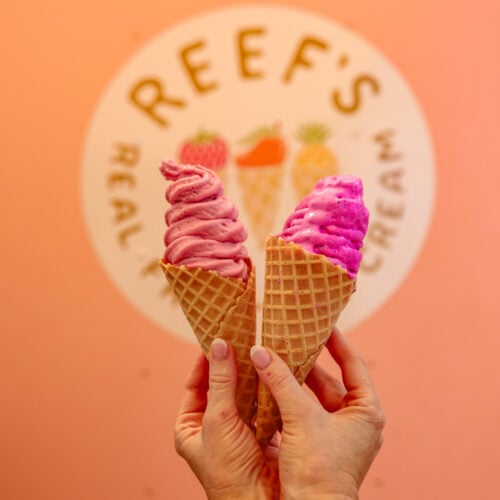
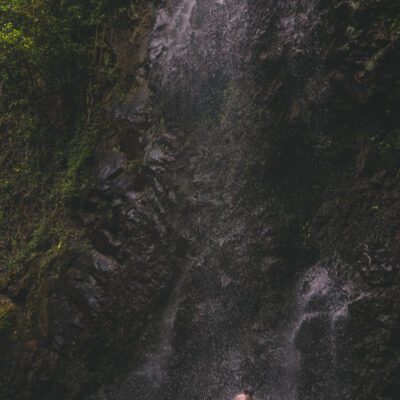

[…] tube is a smaller version of the 20-mile-long Kaumana Caves. See our Hilo Travel Guide for more […]